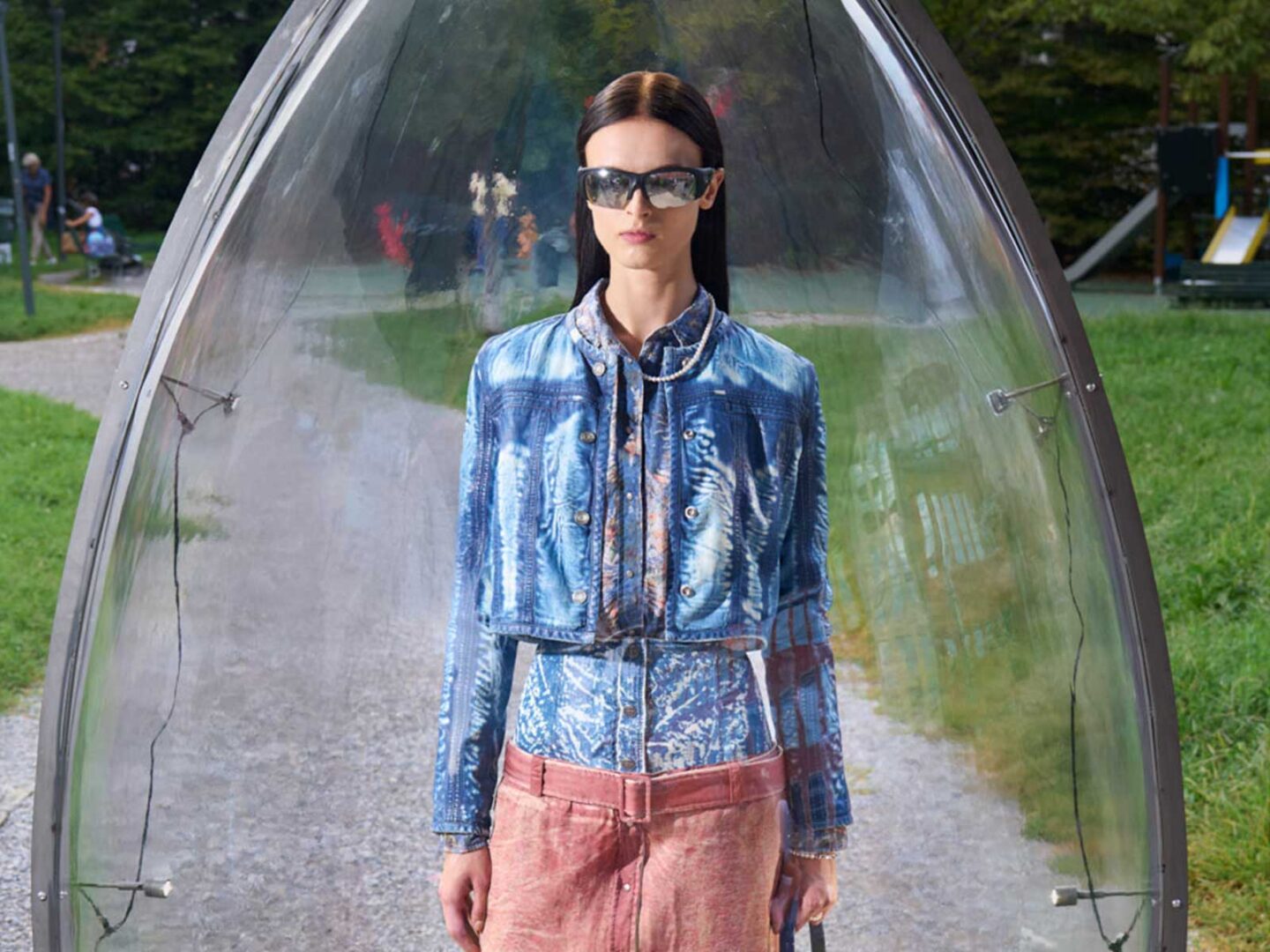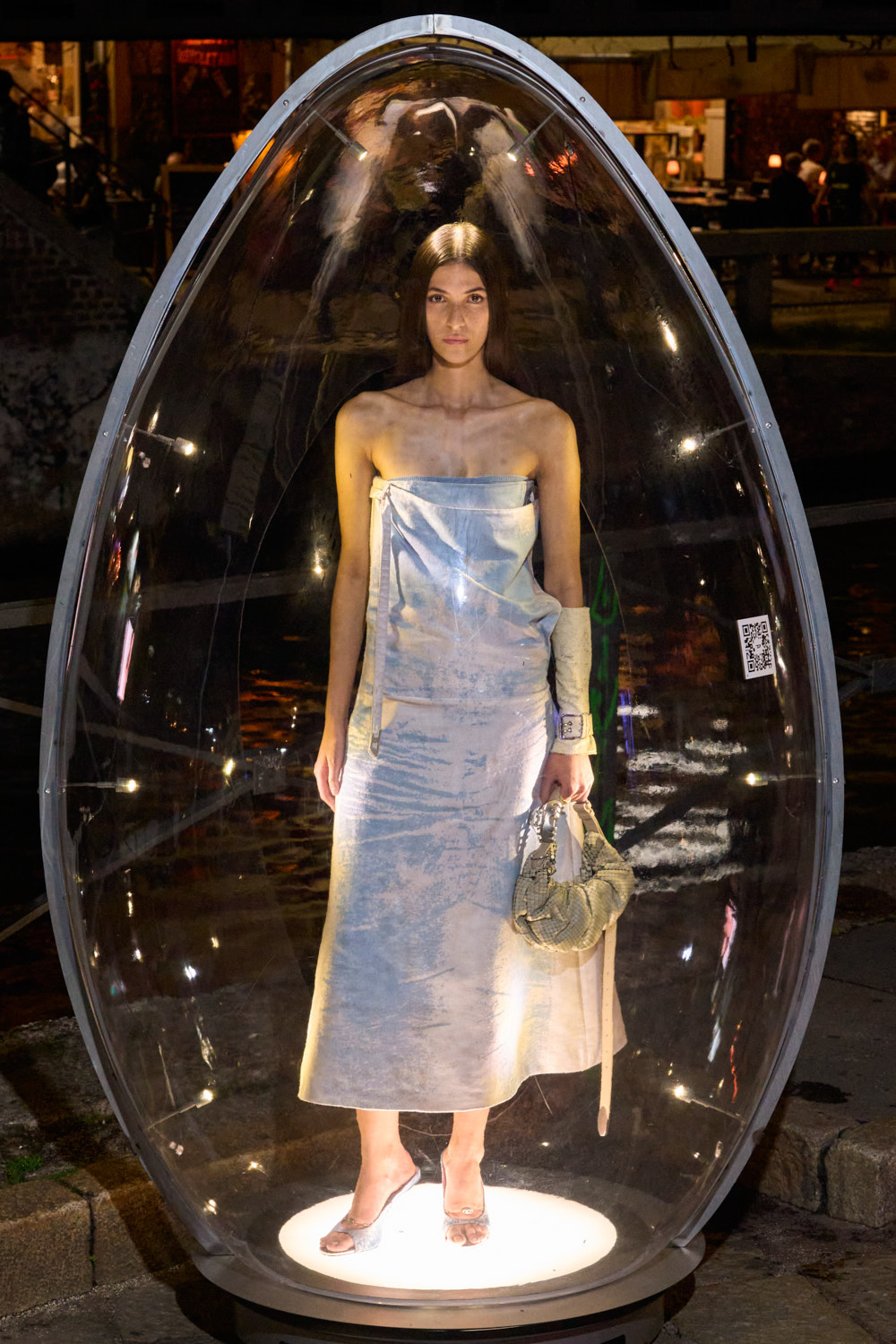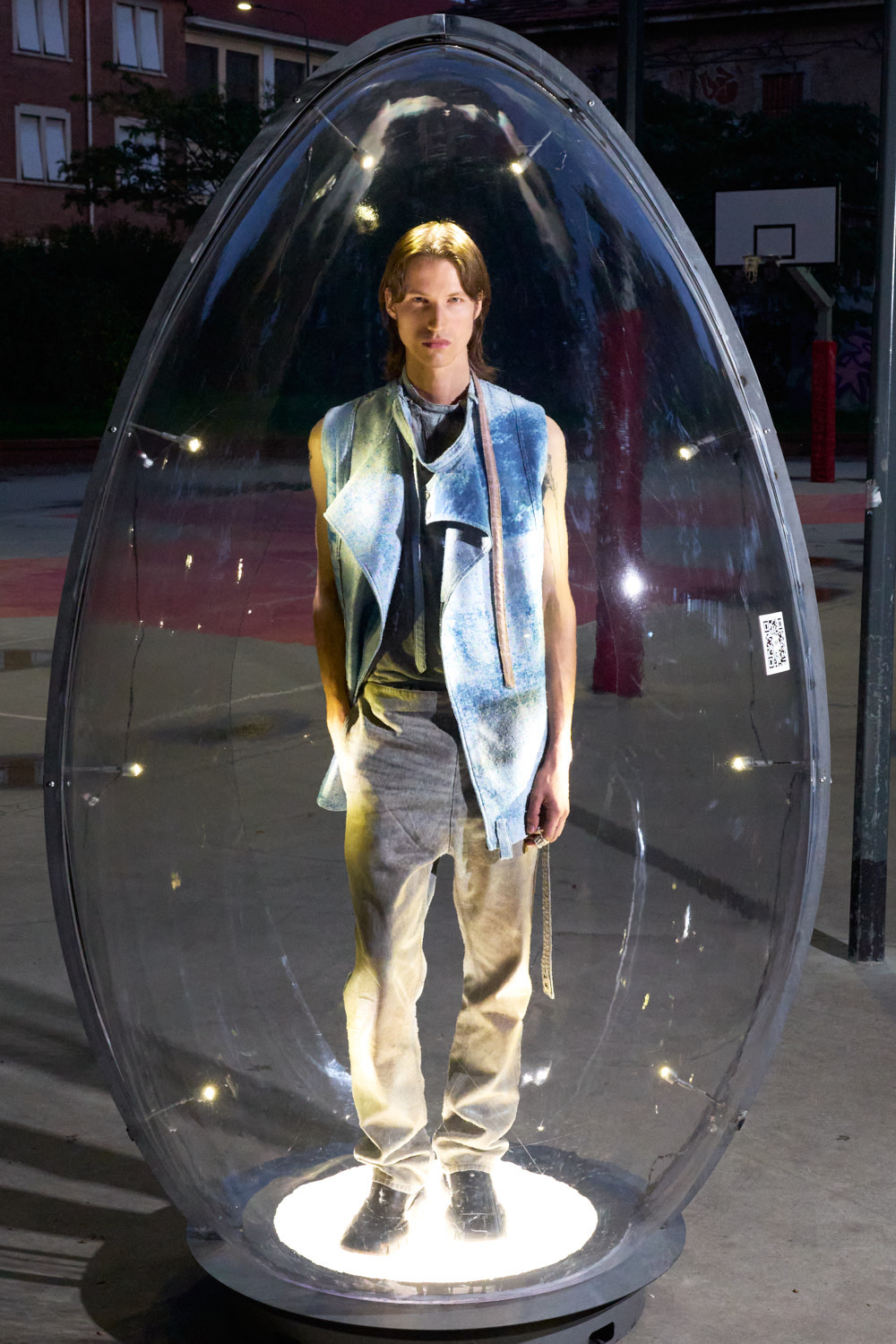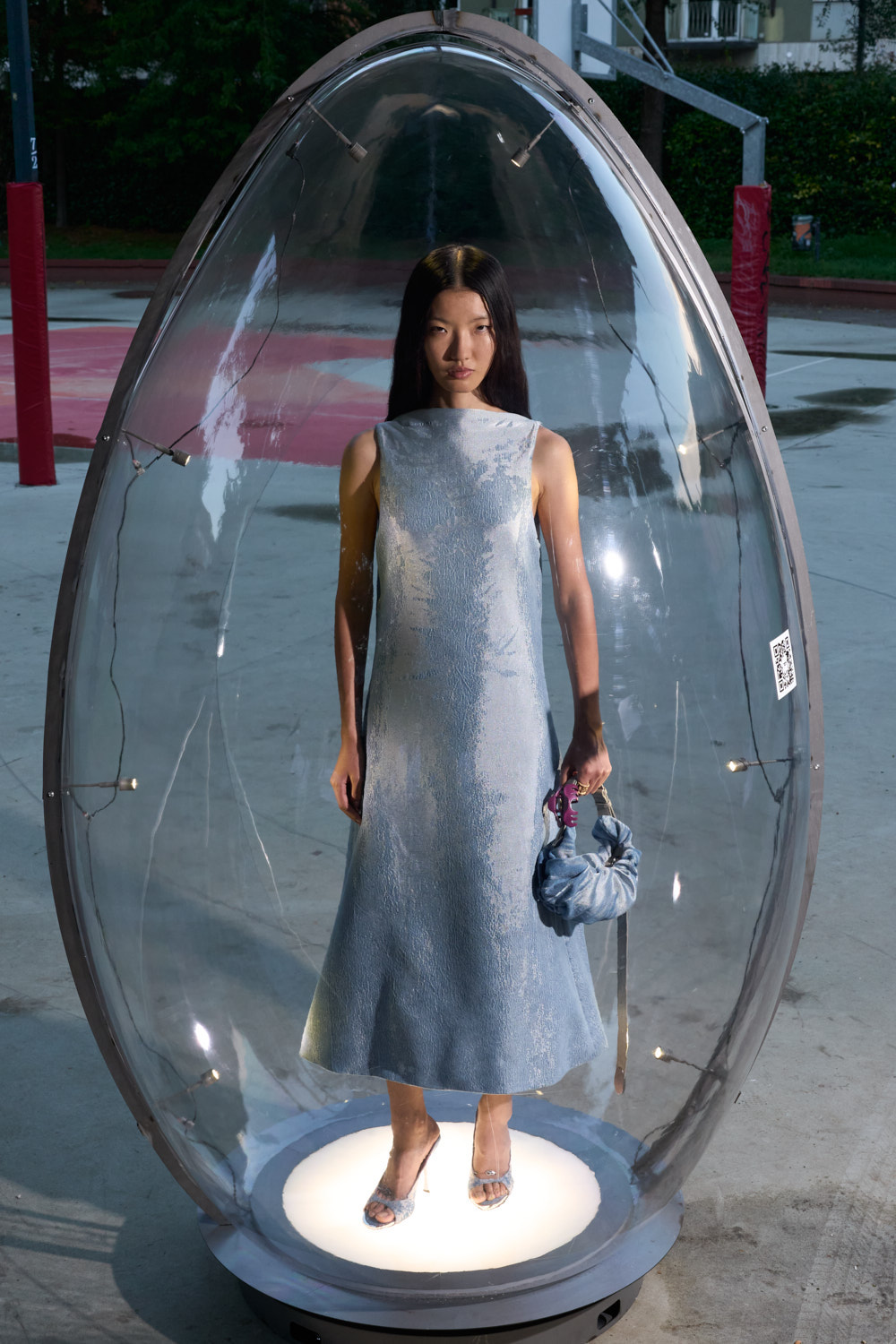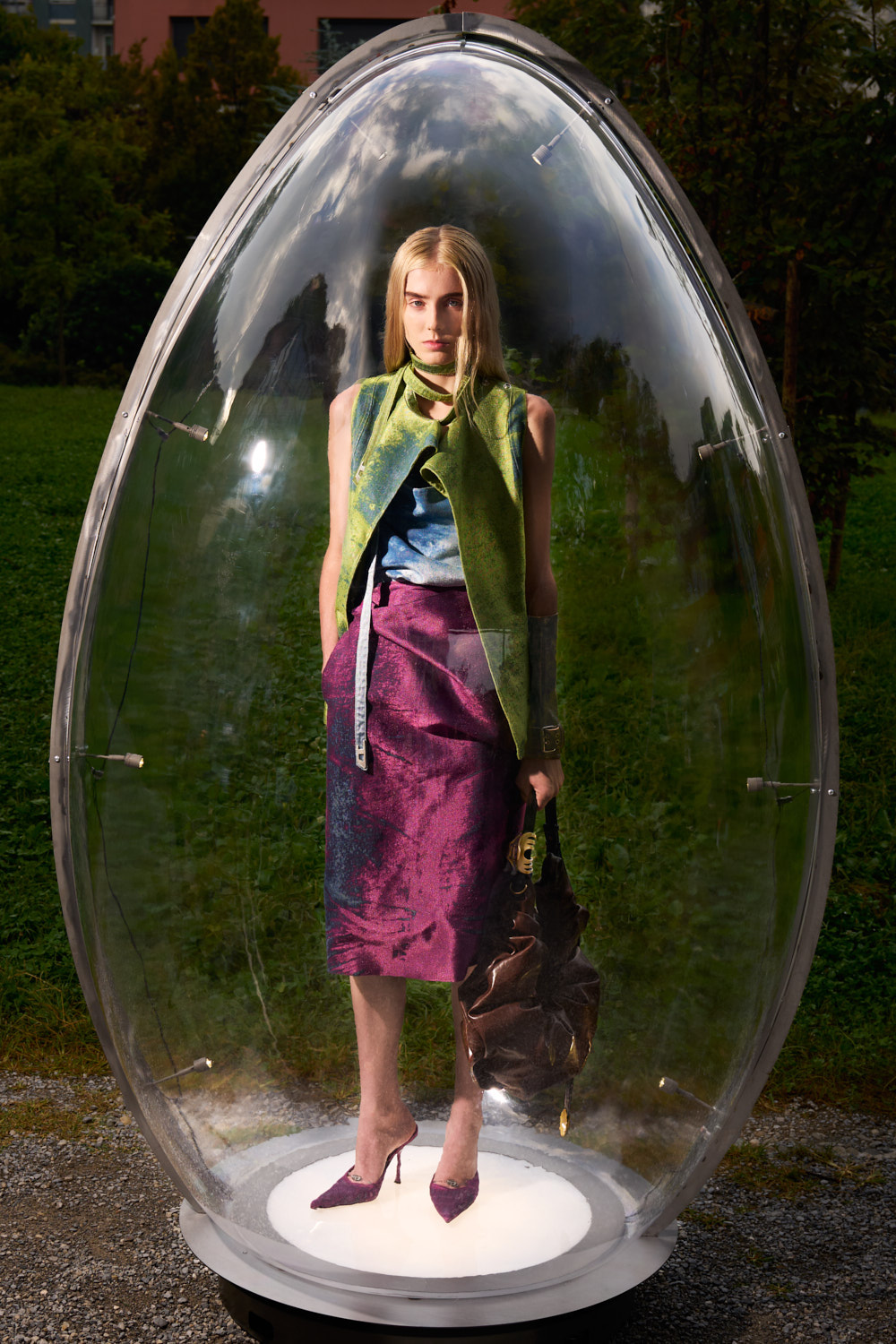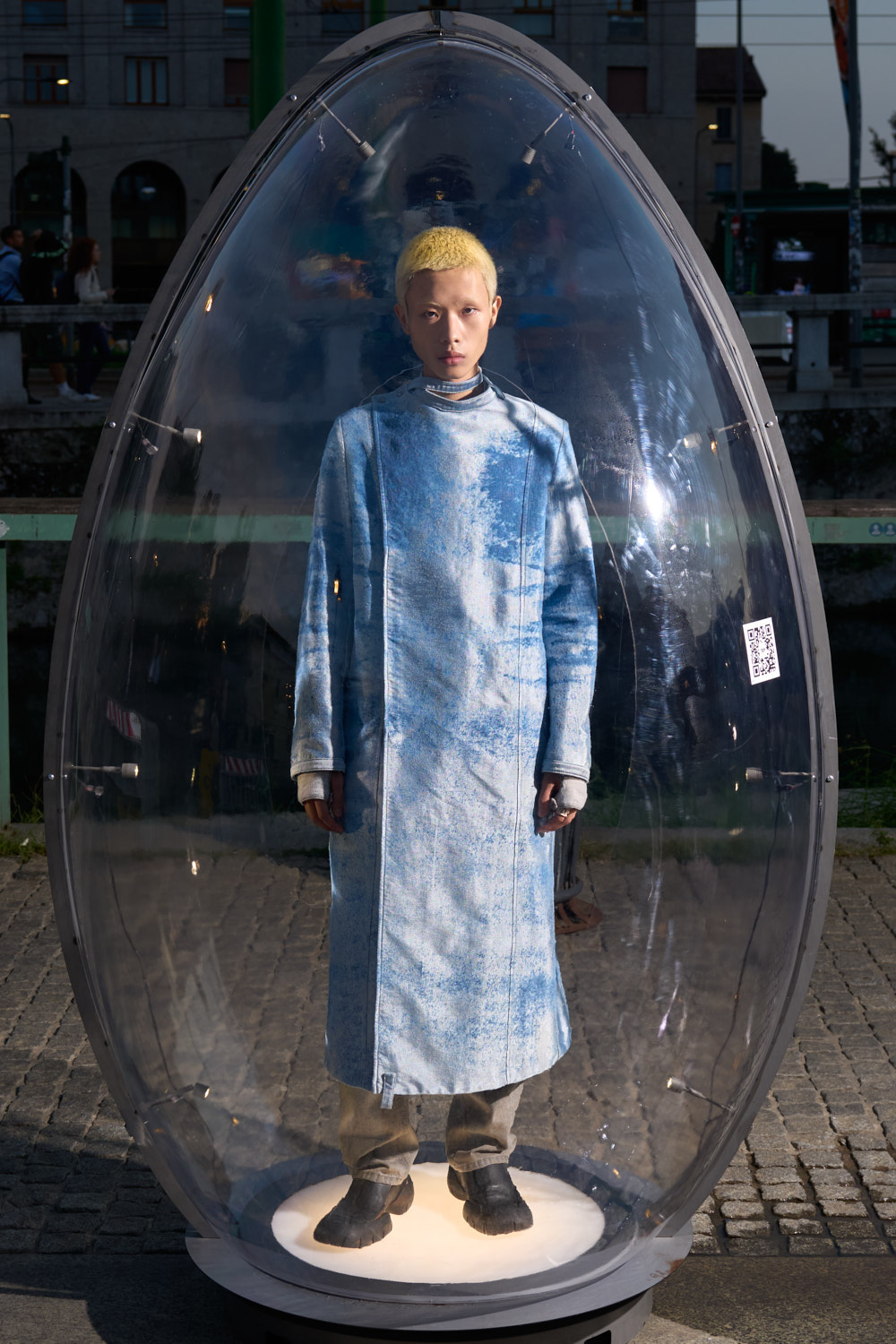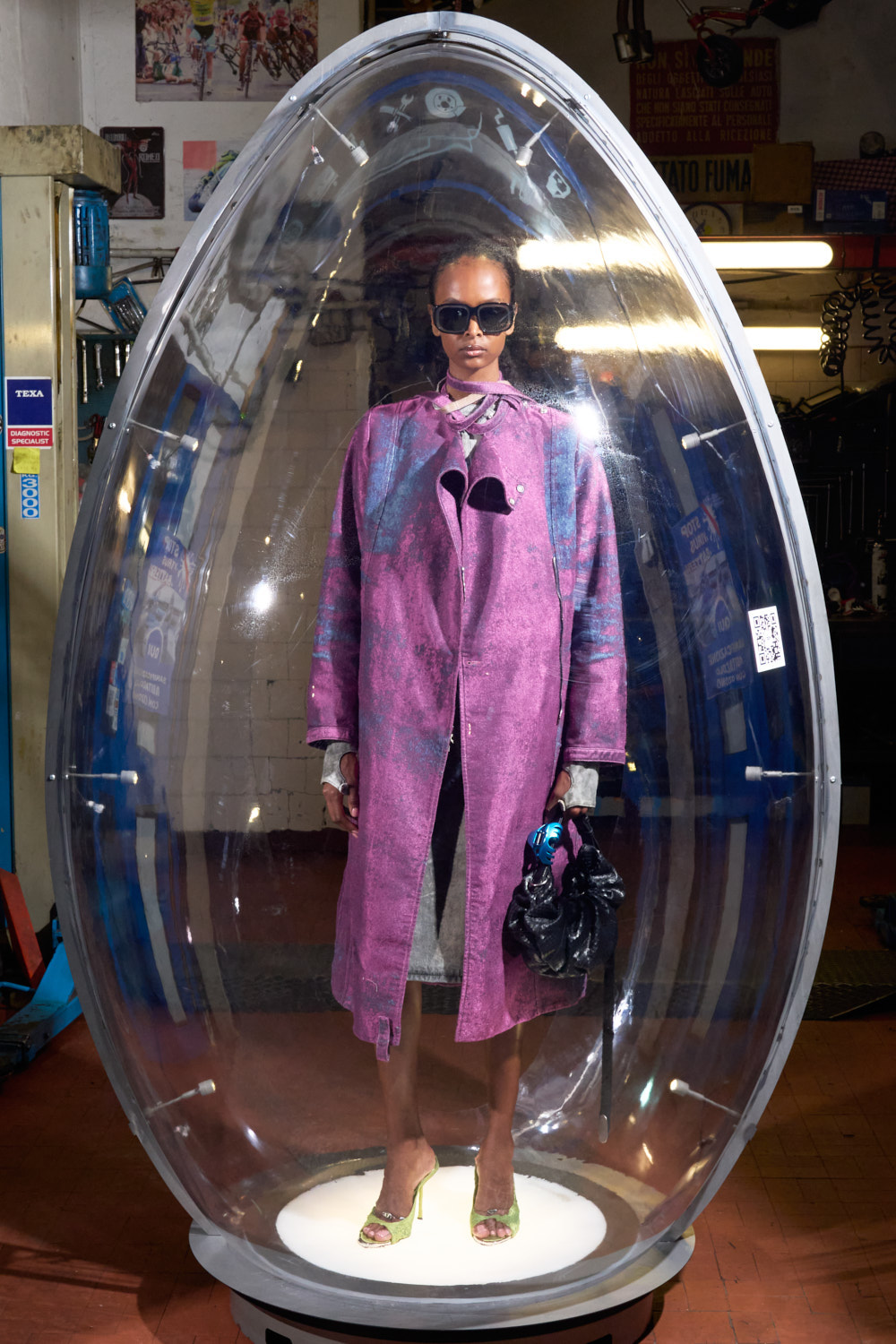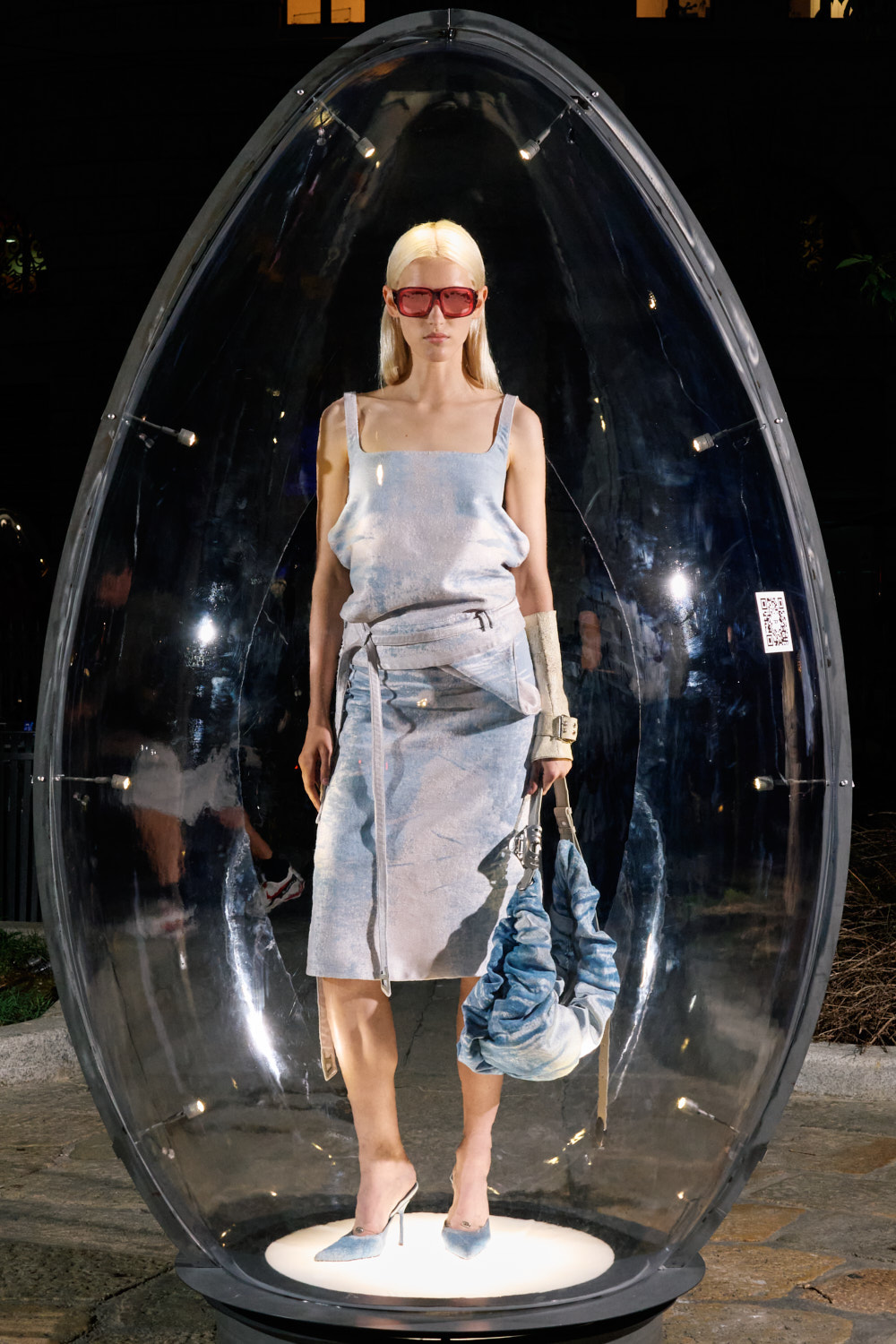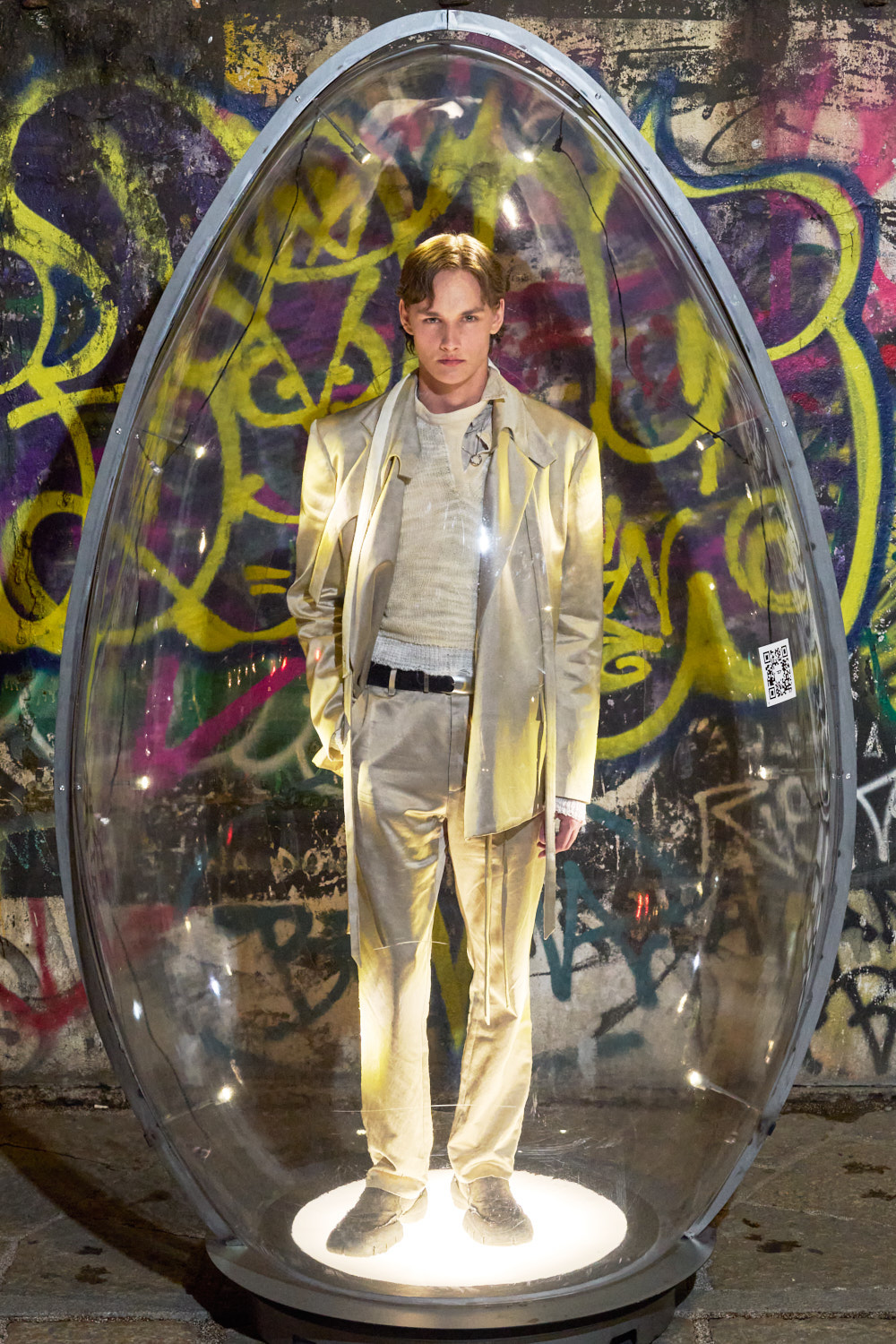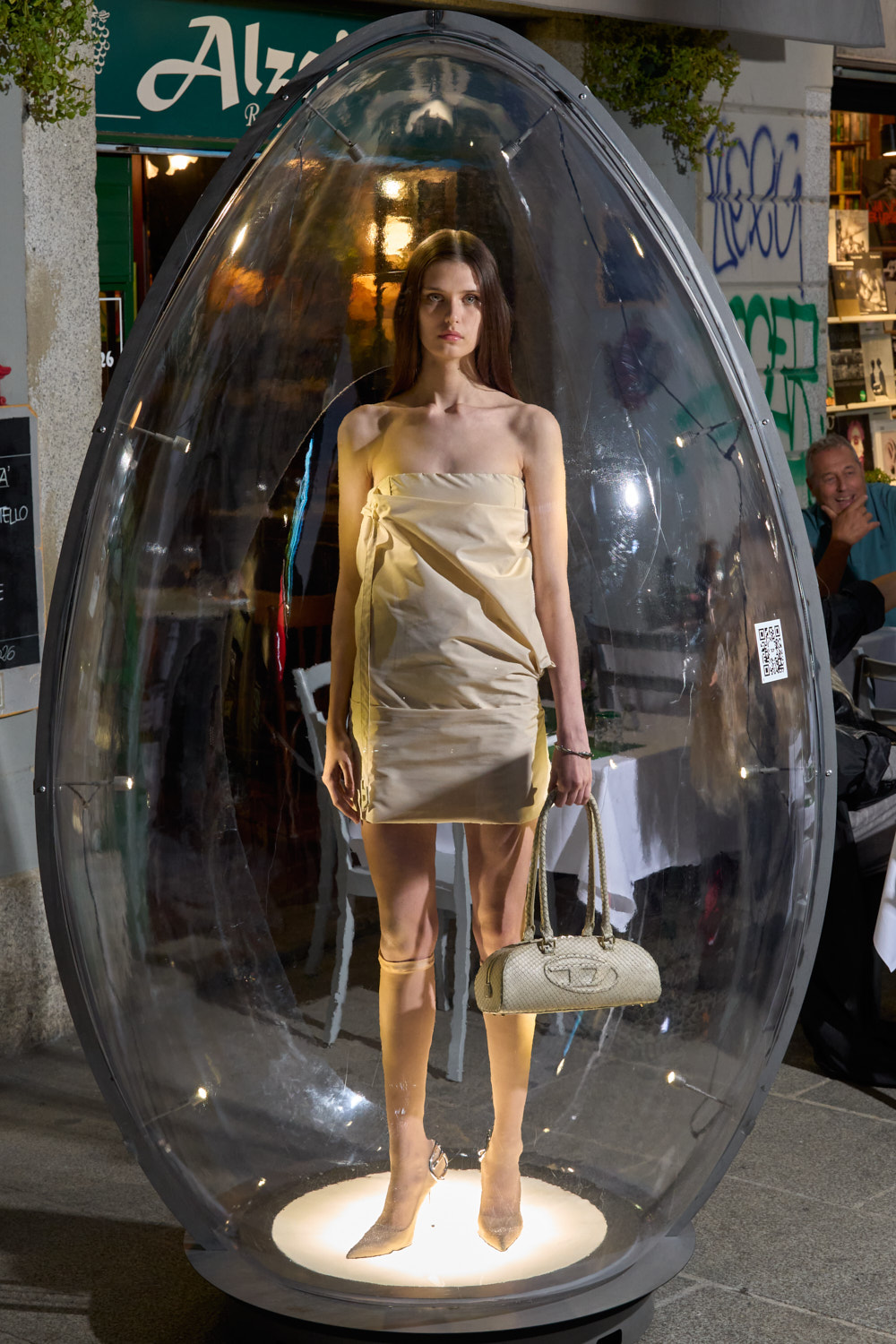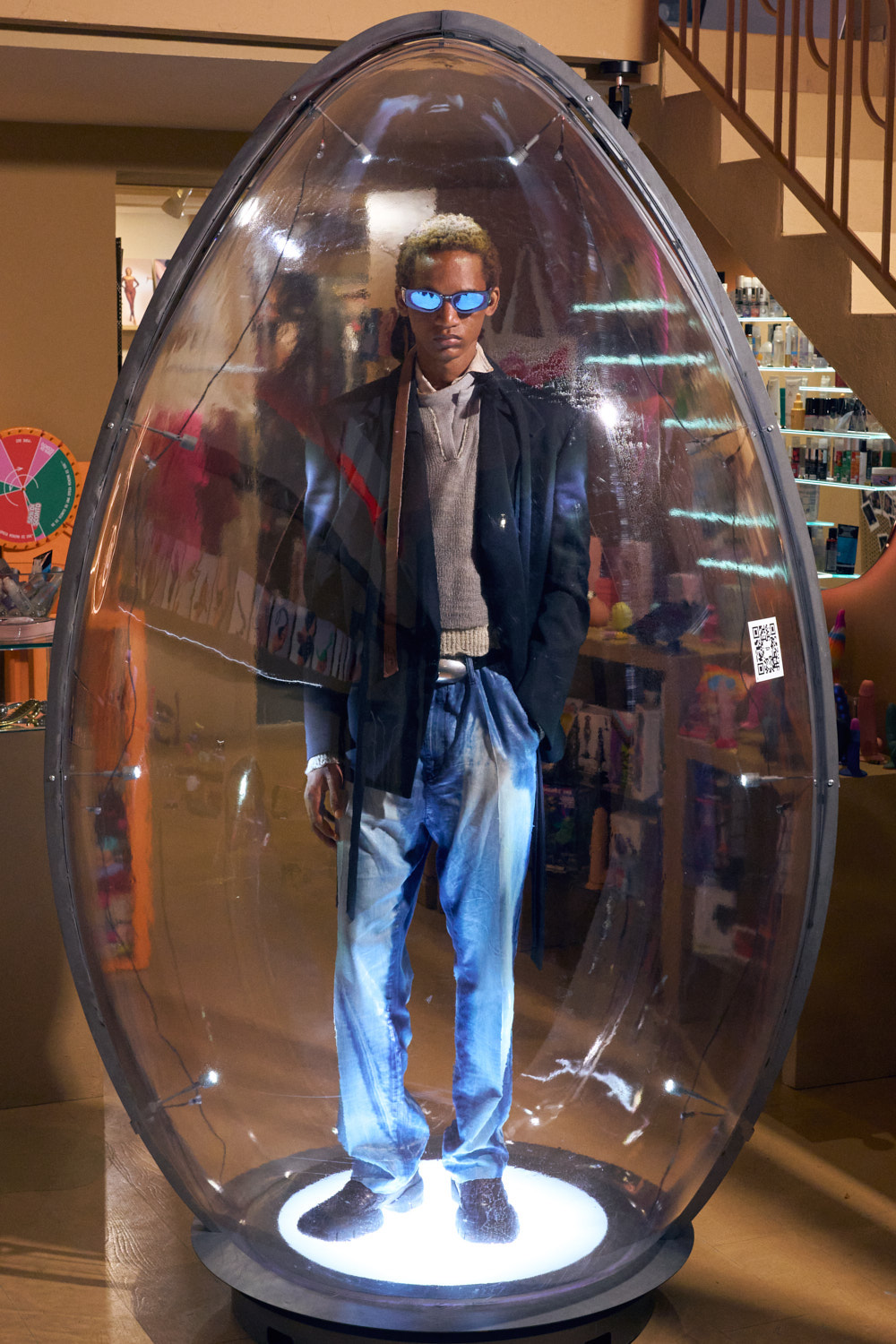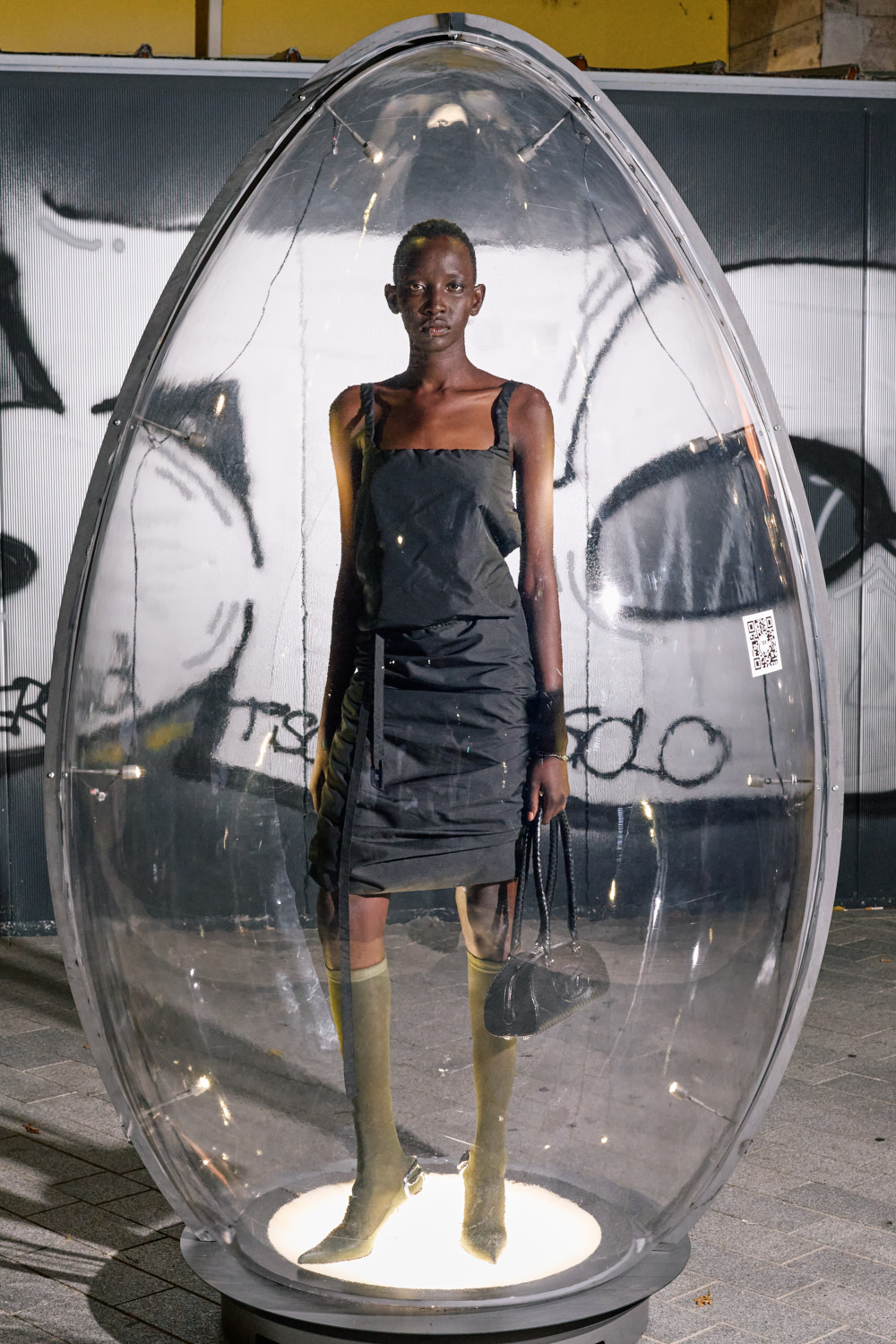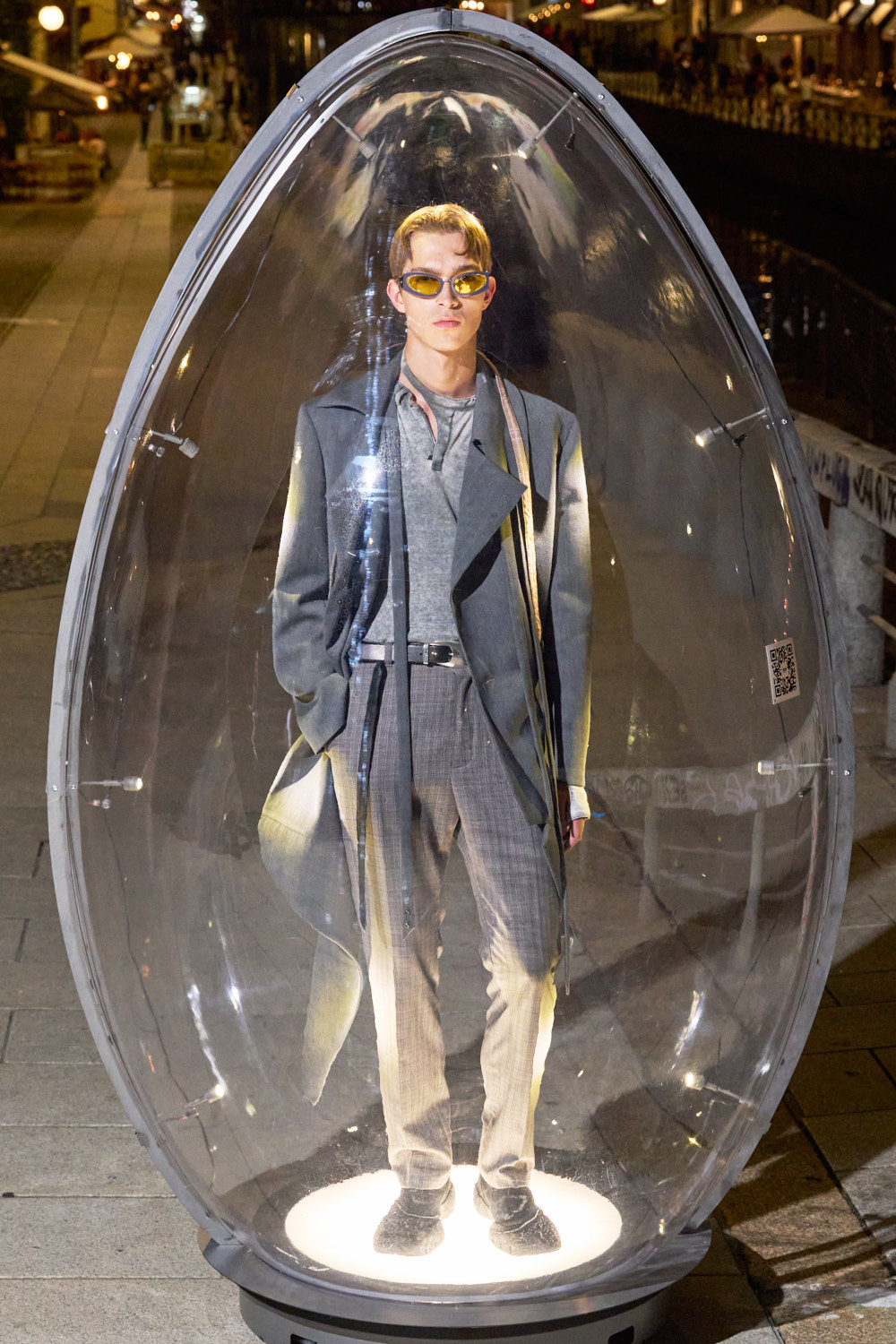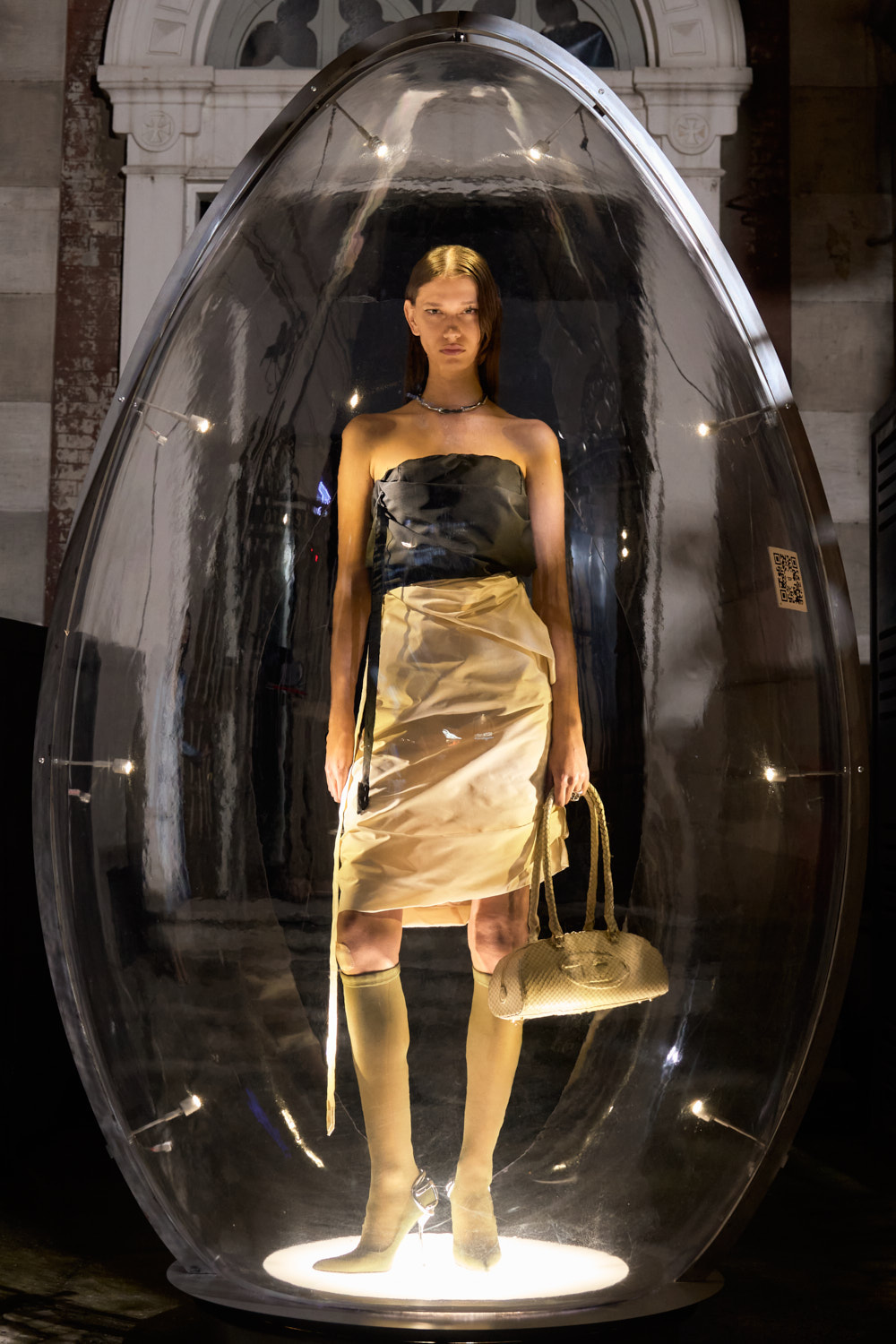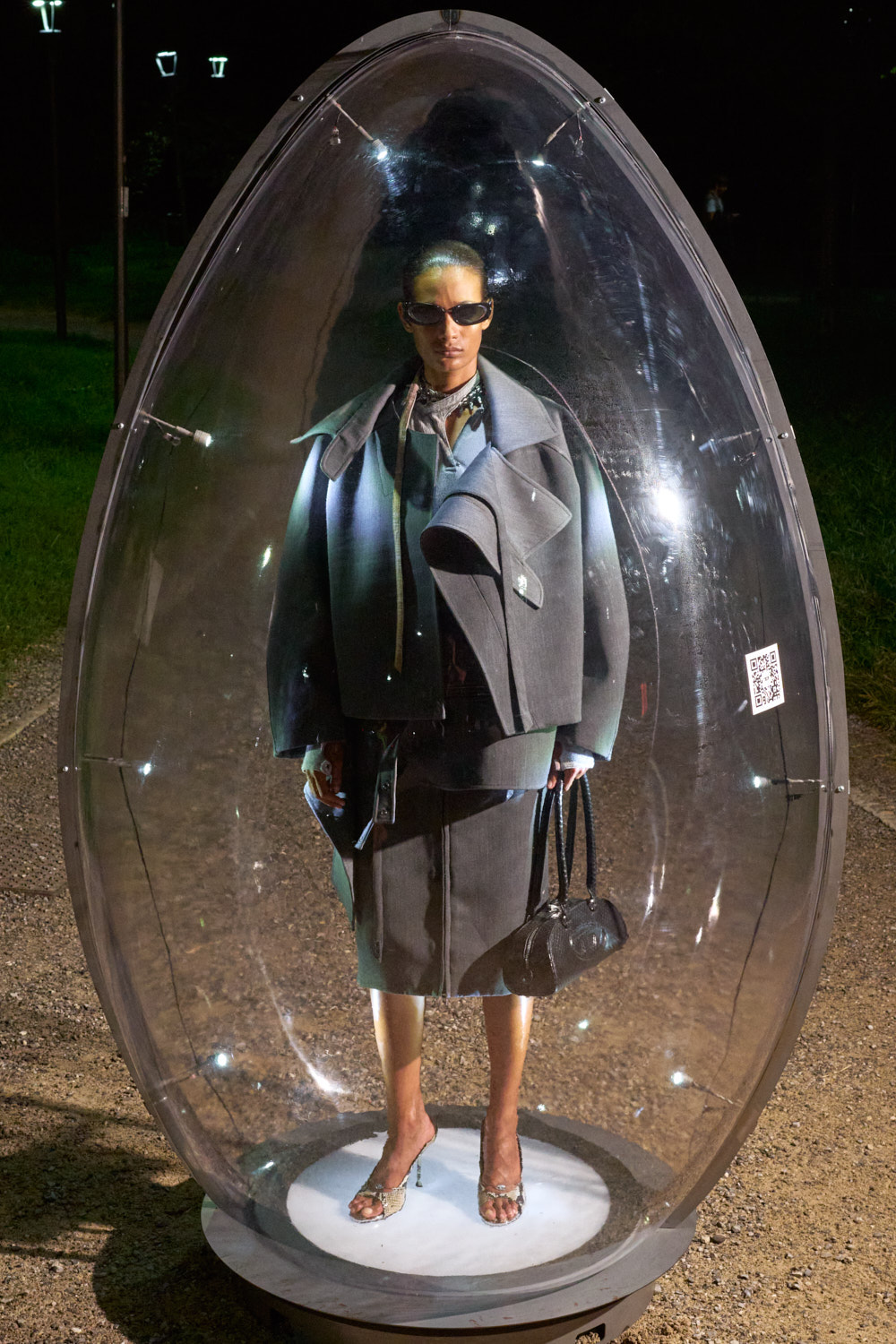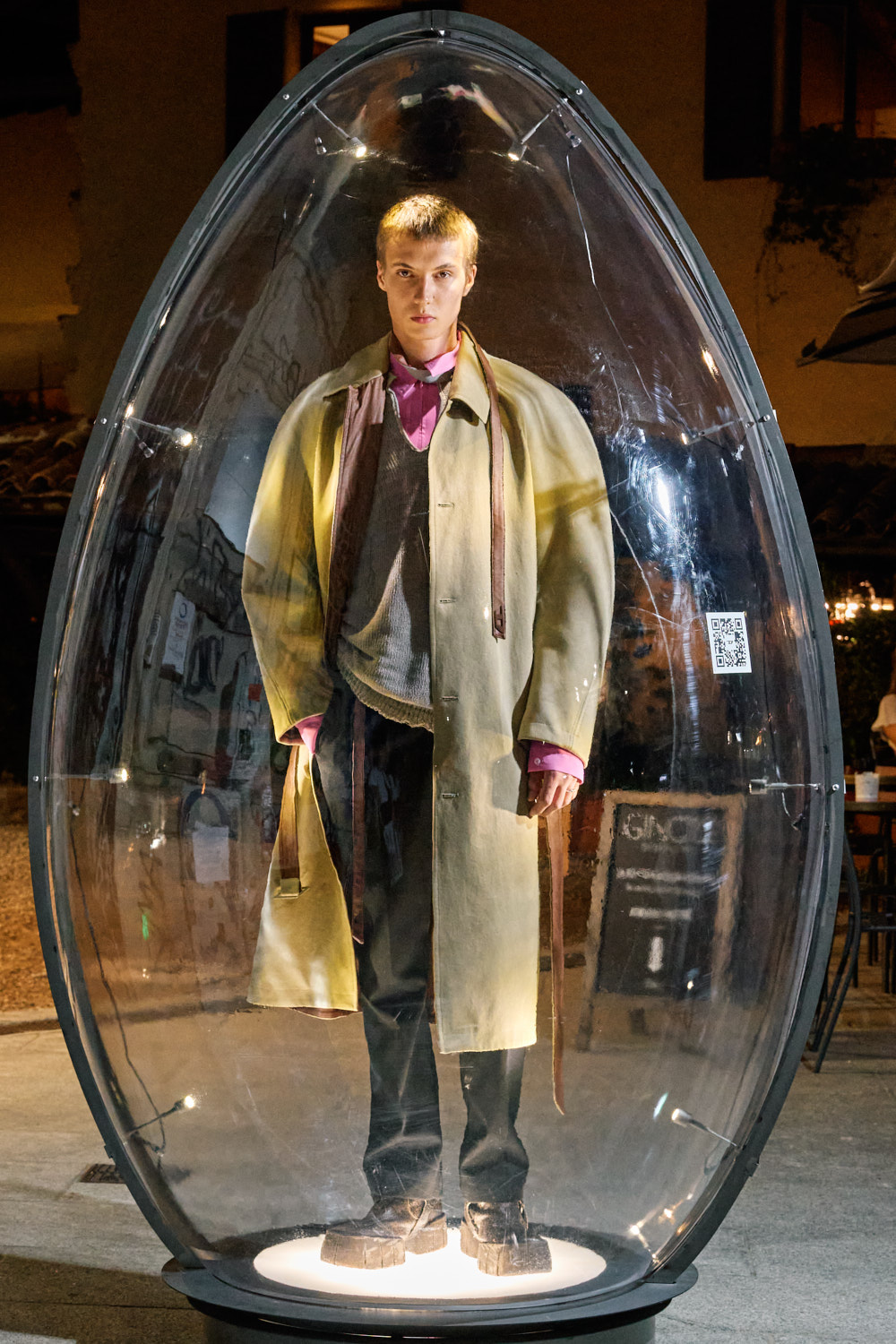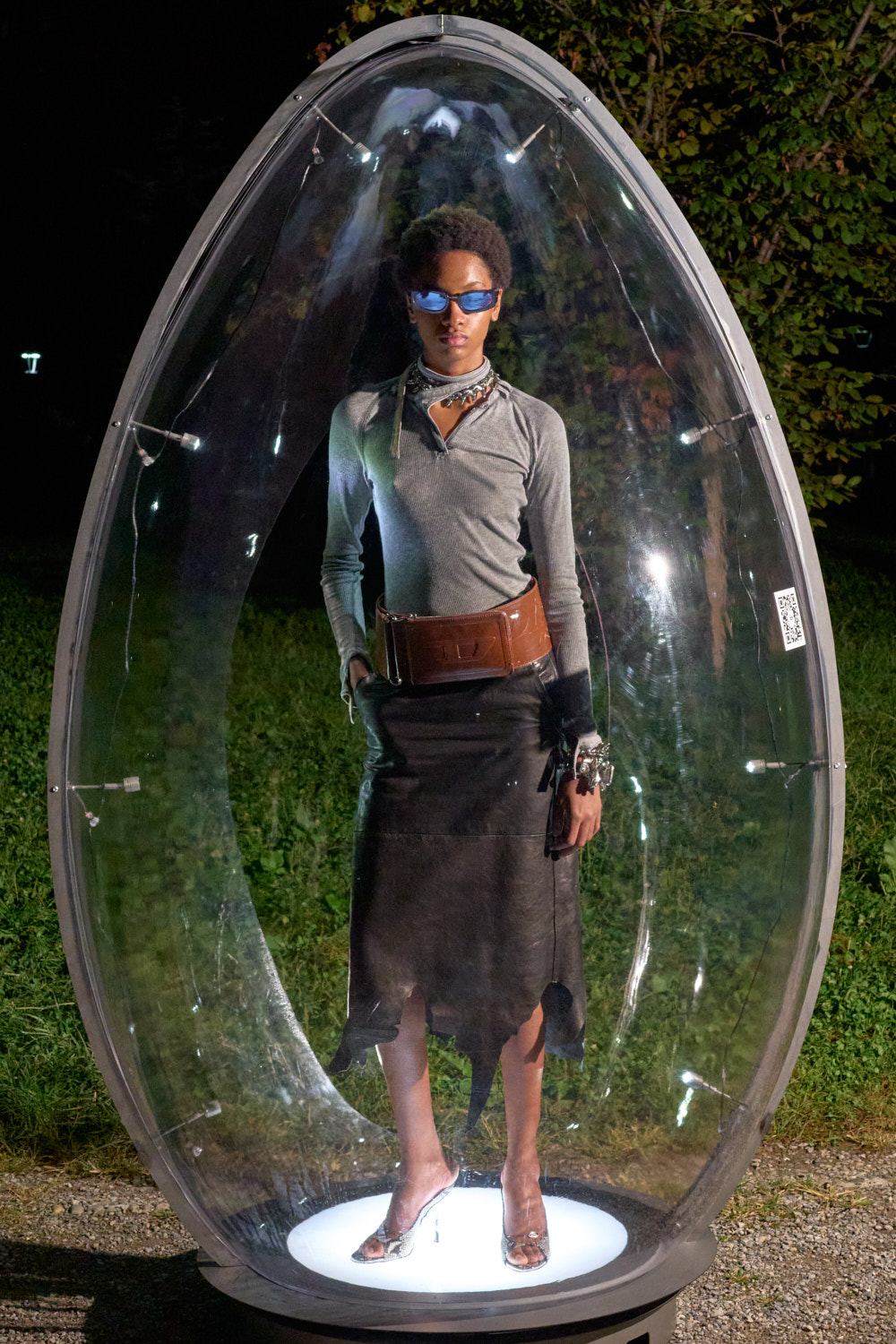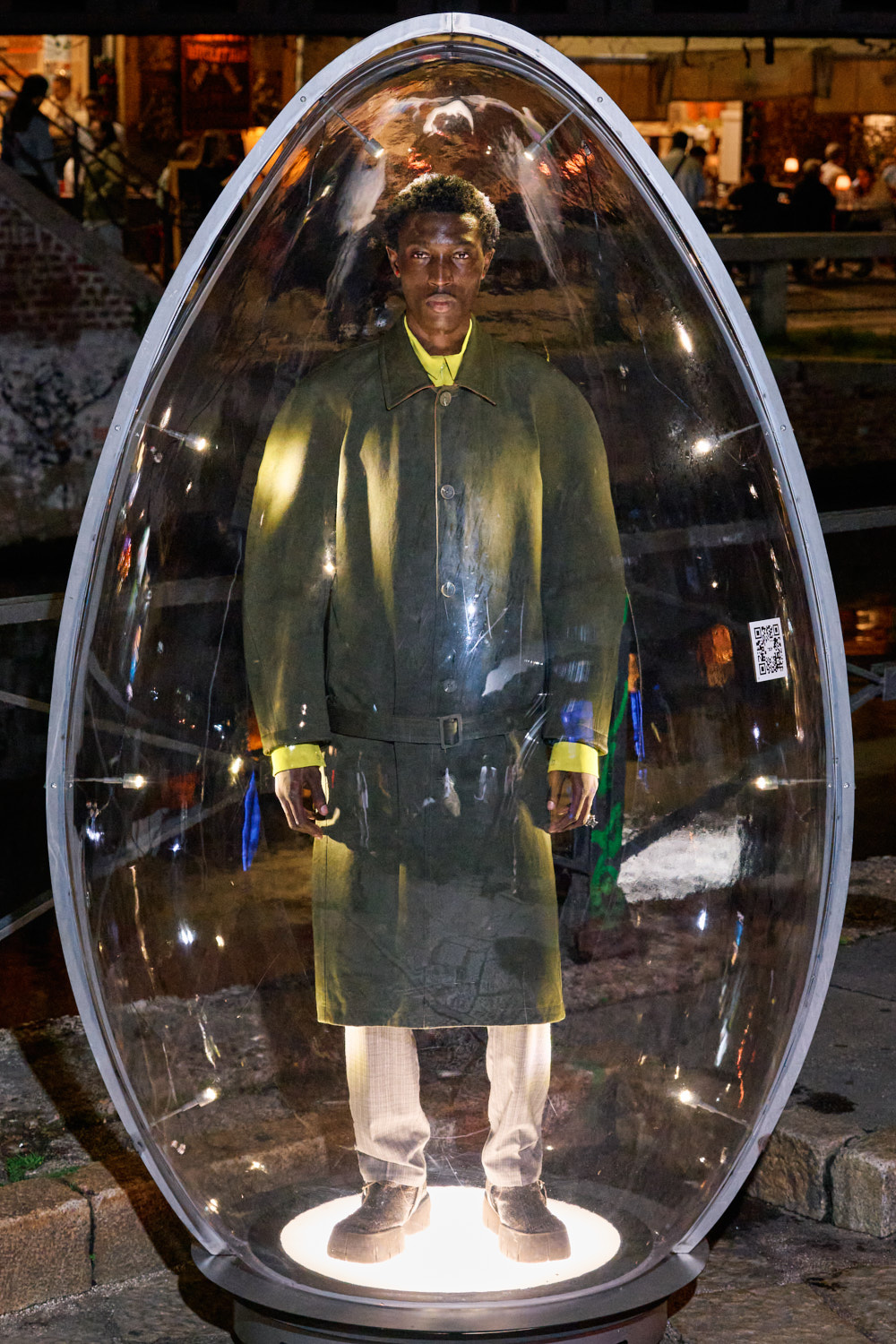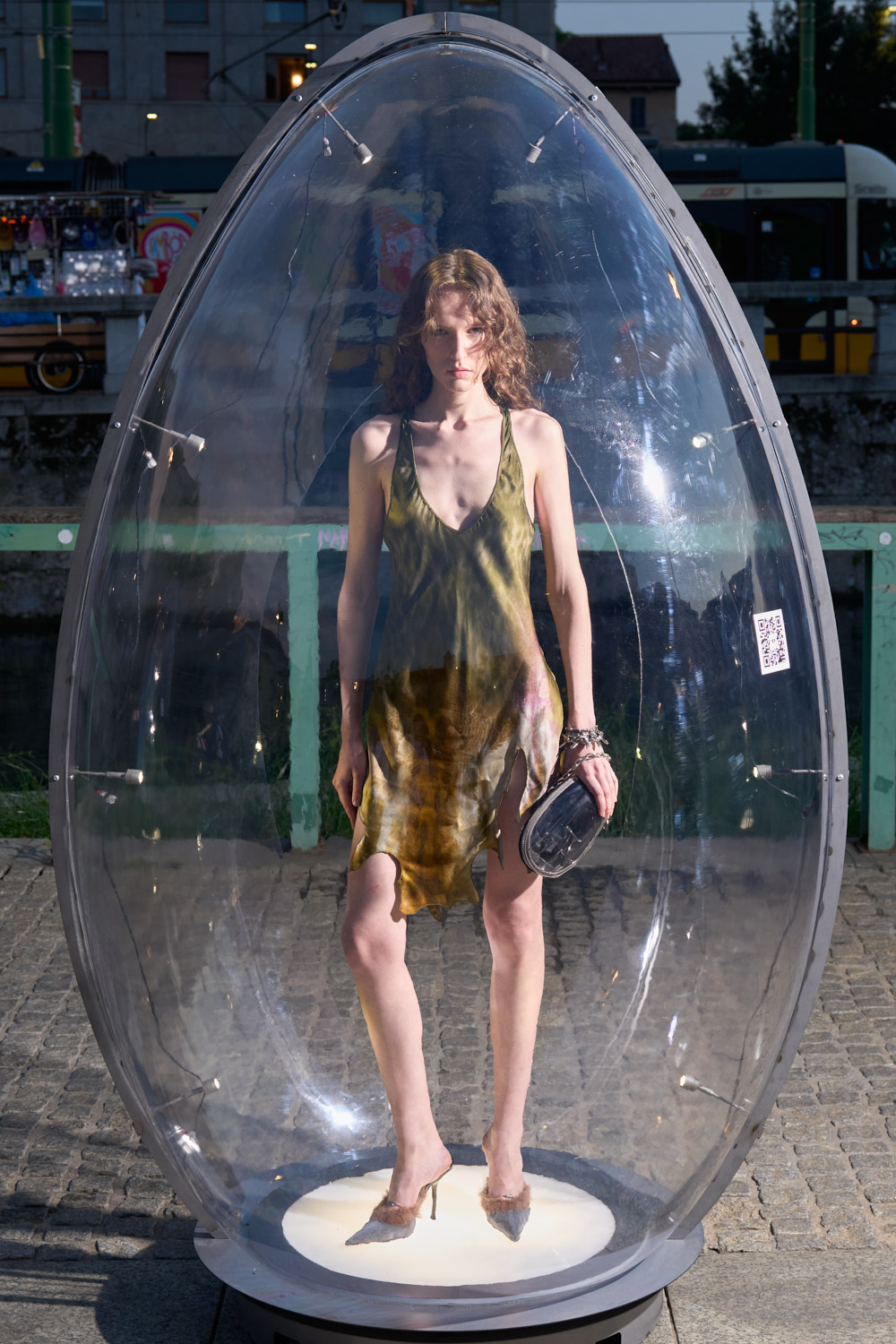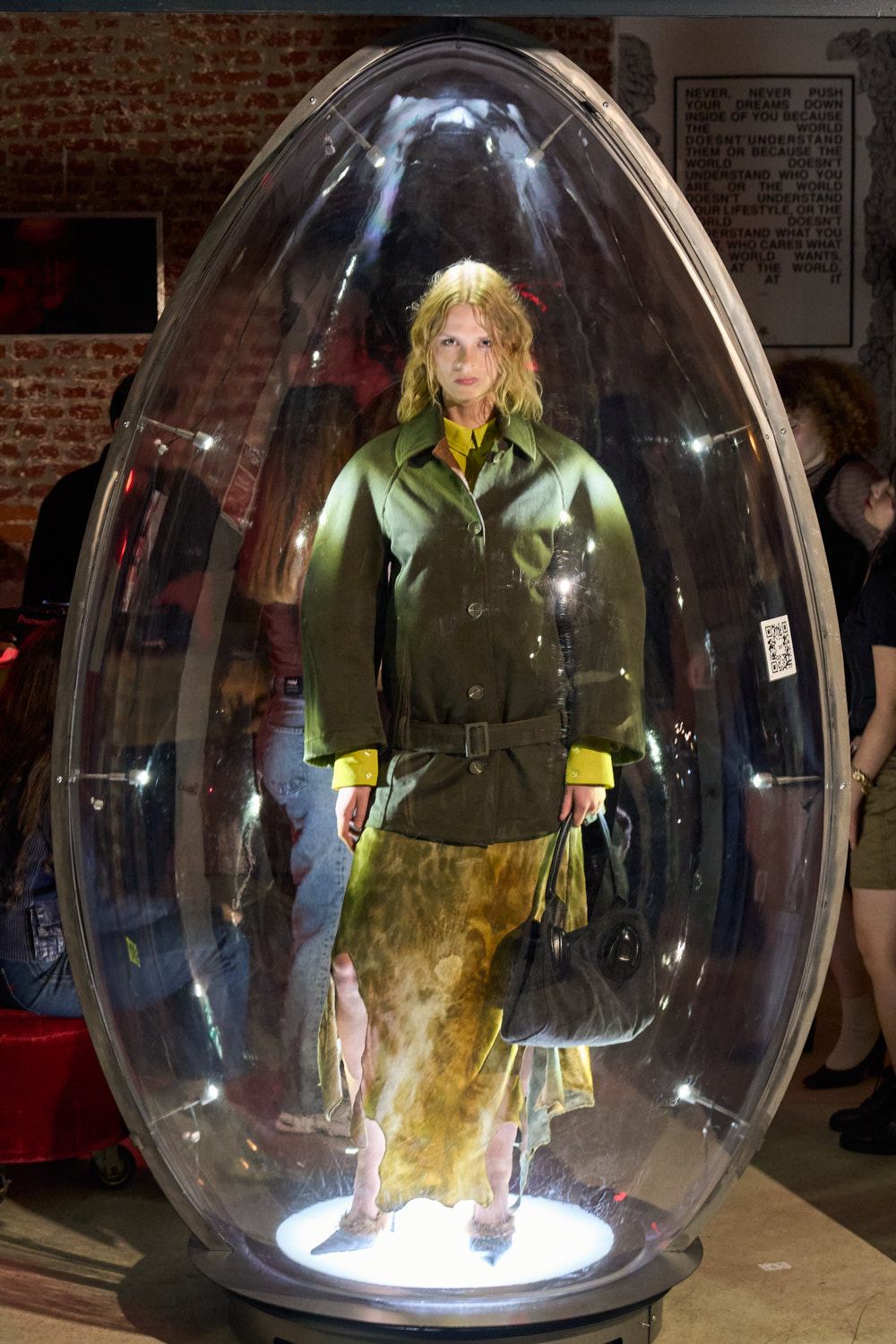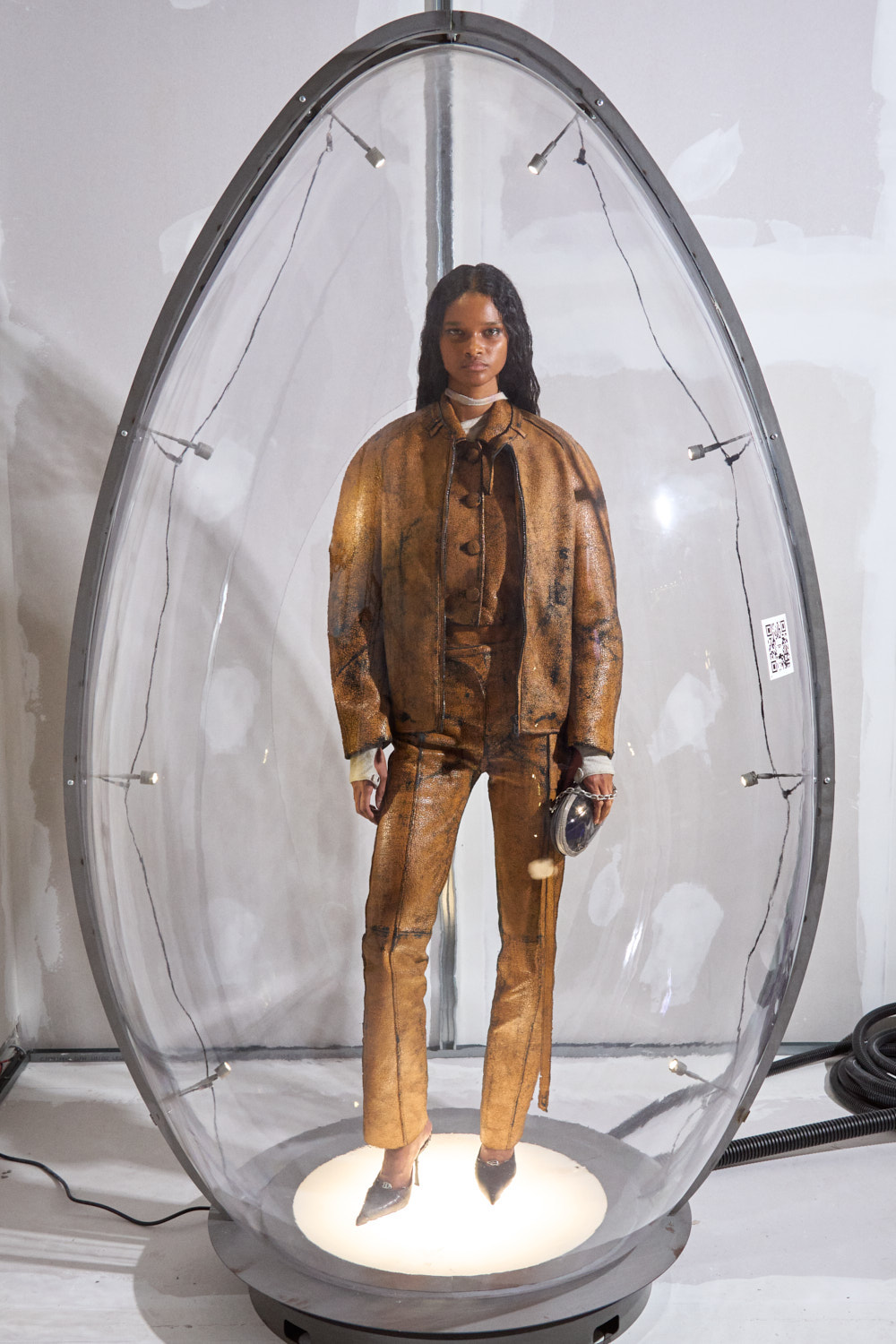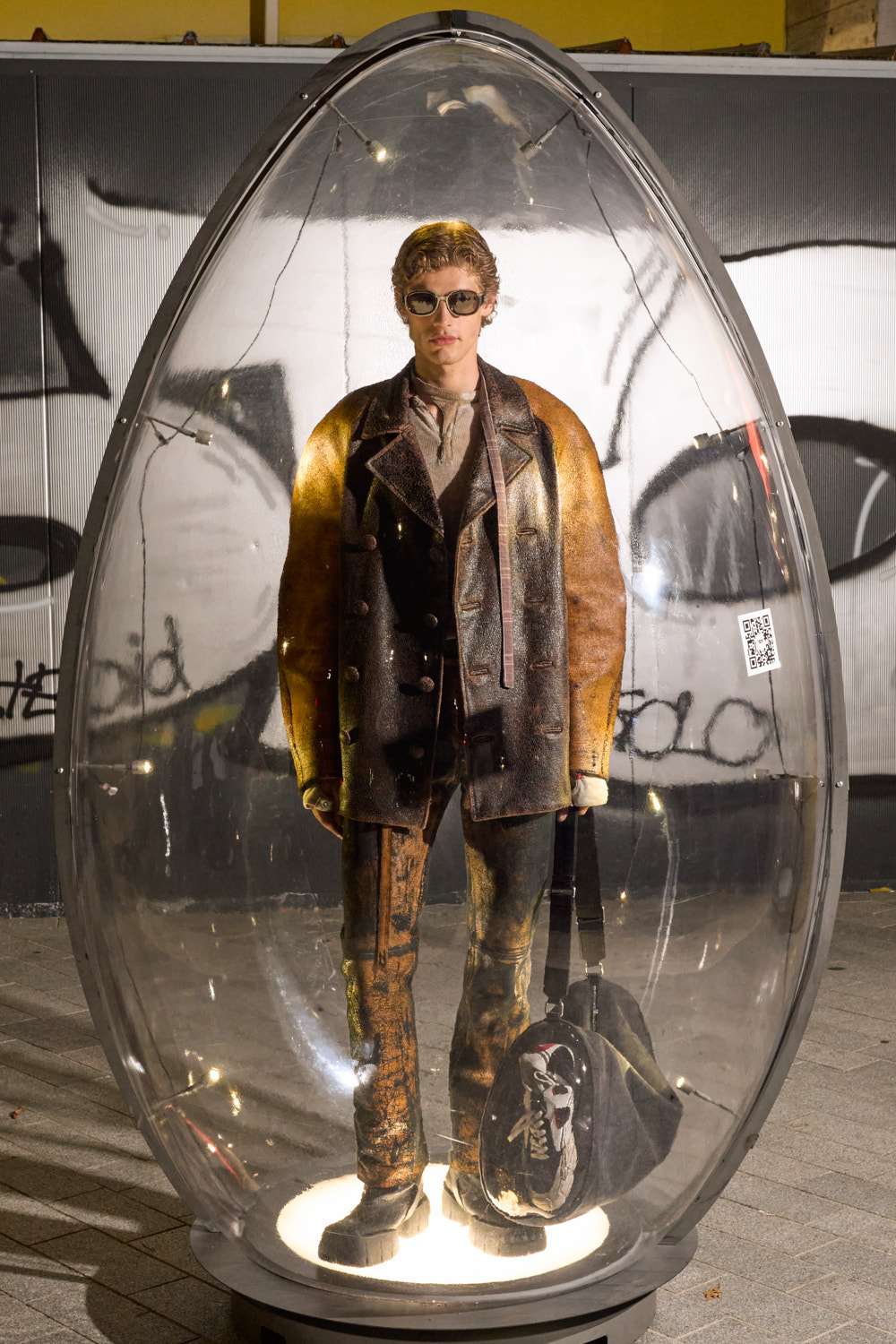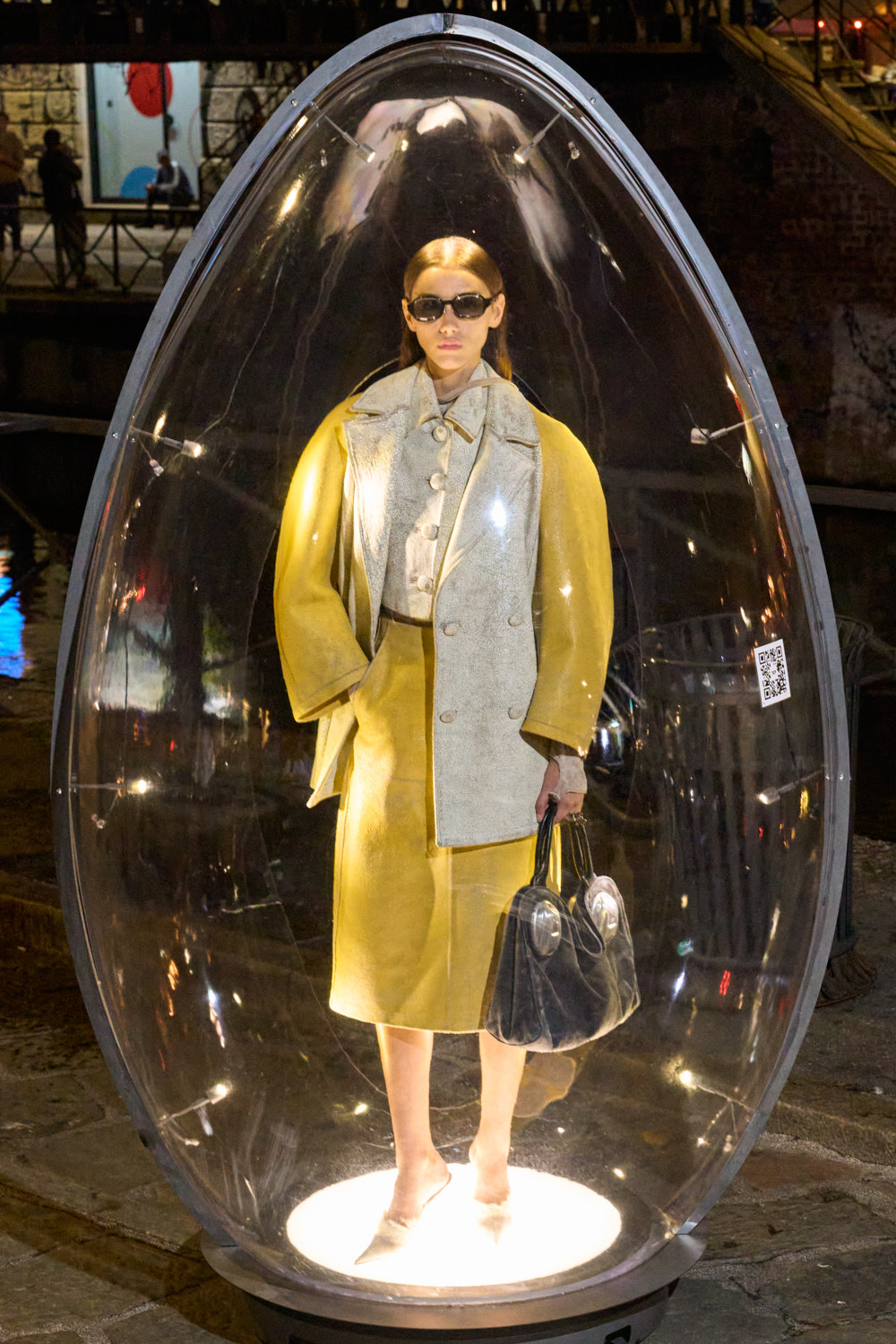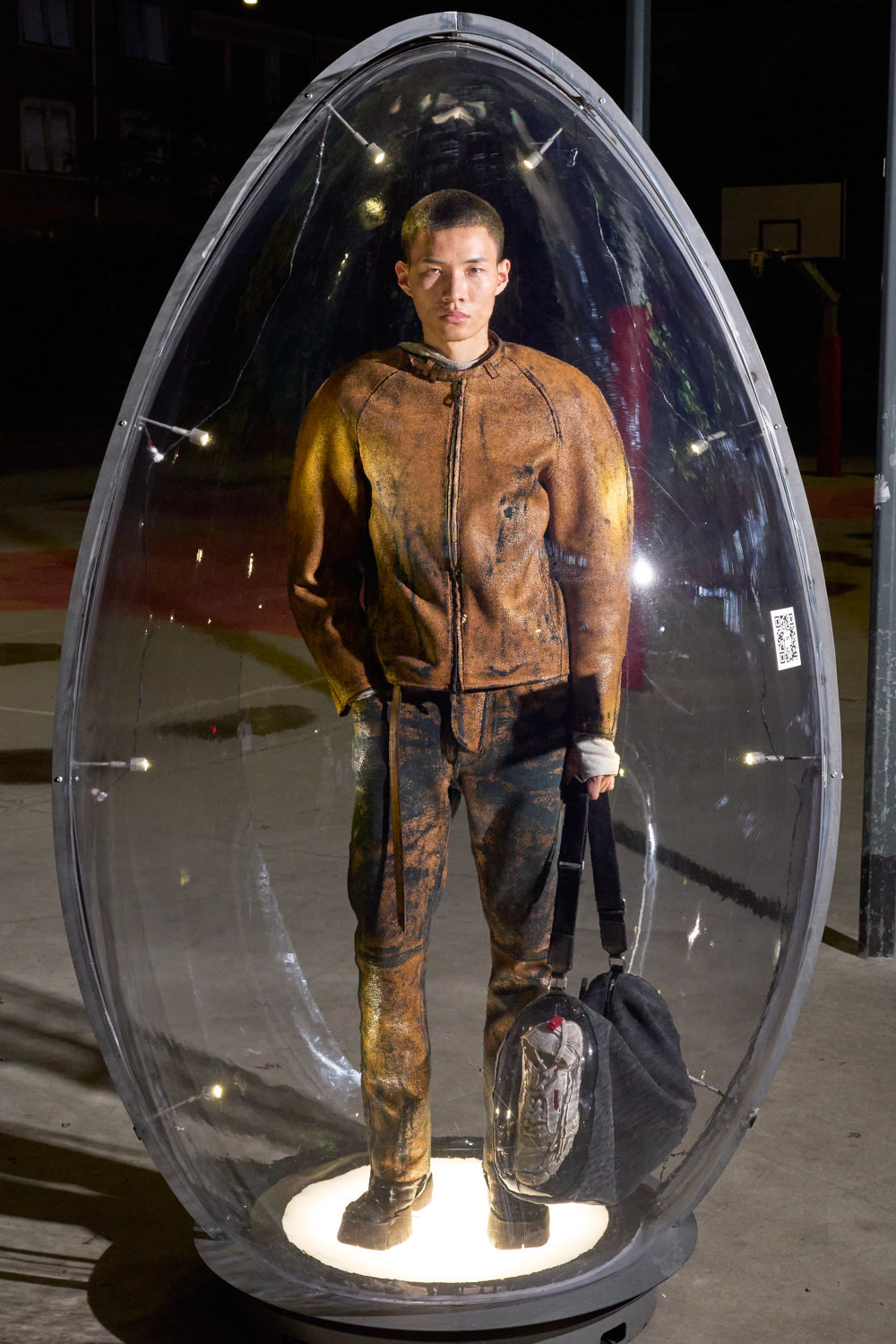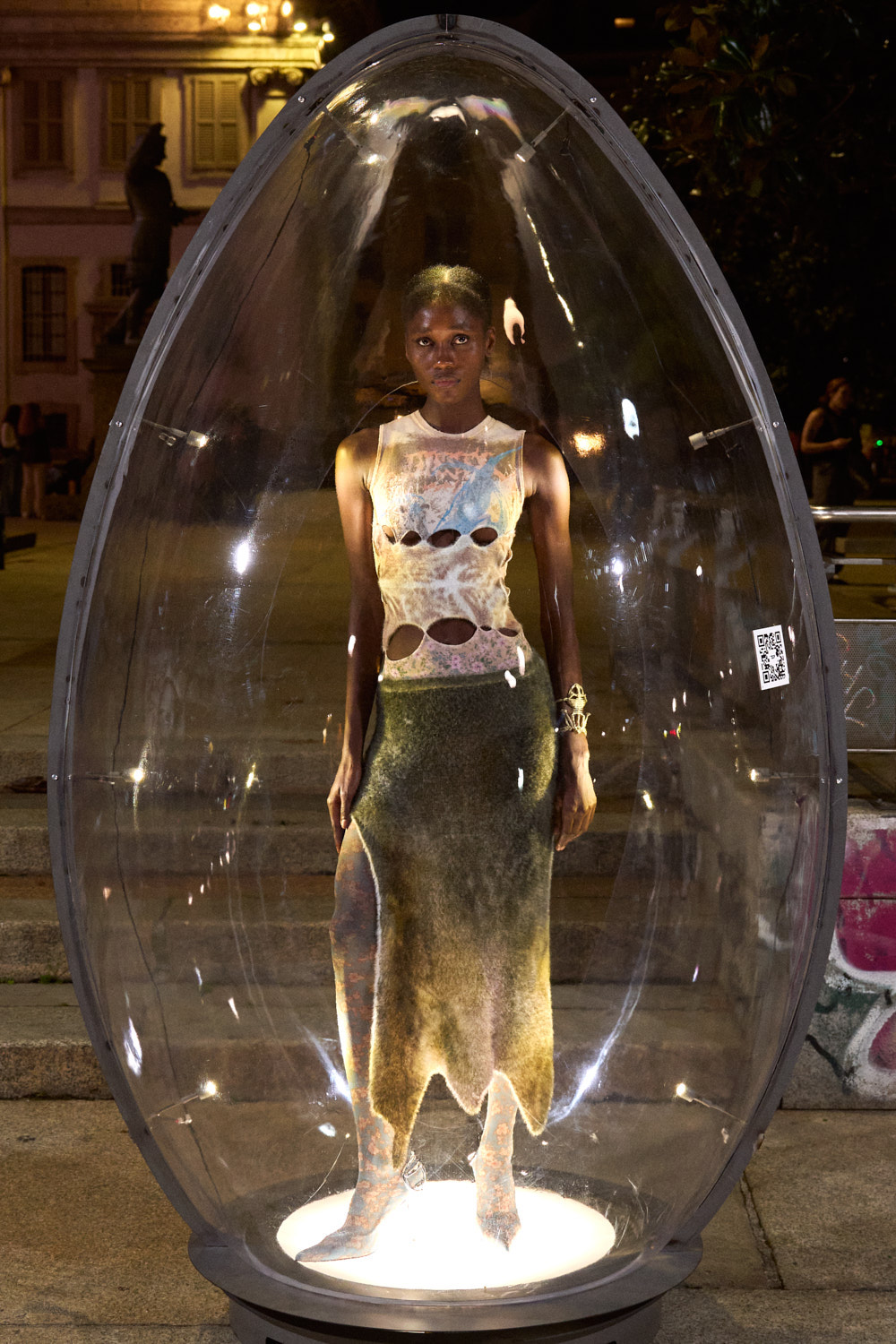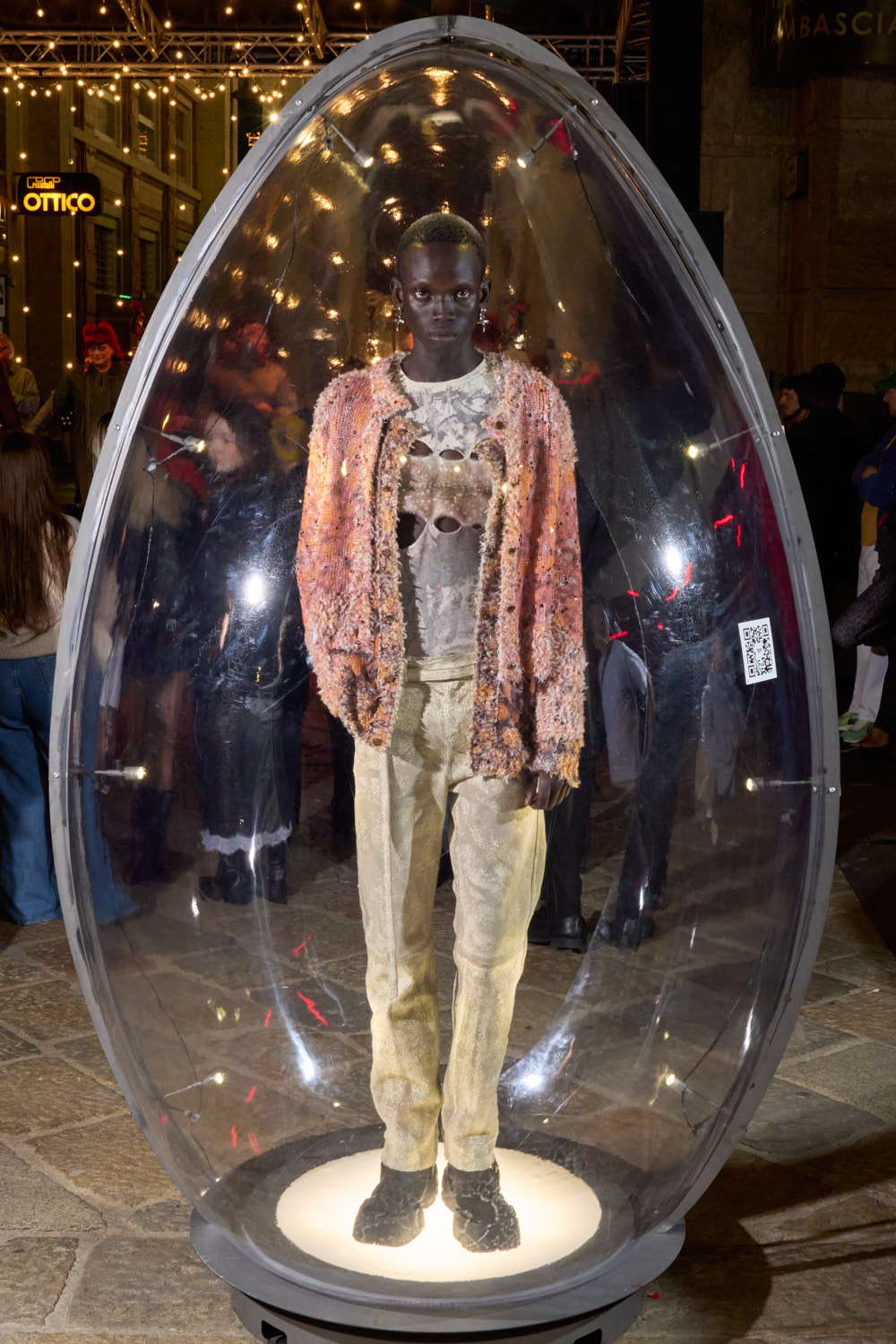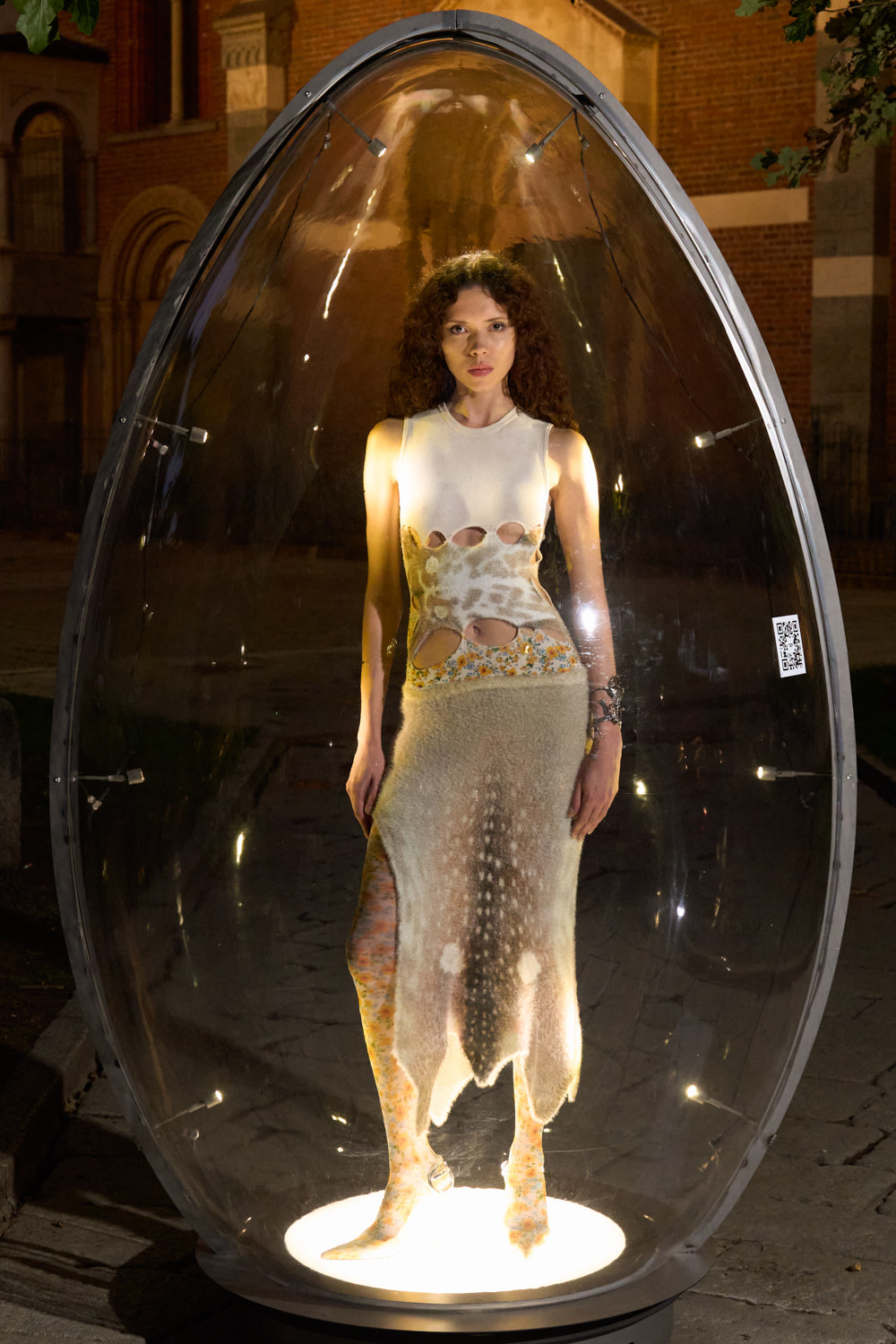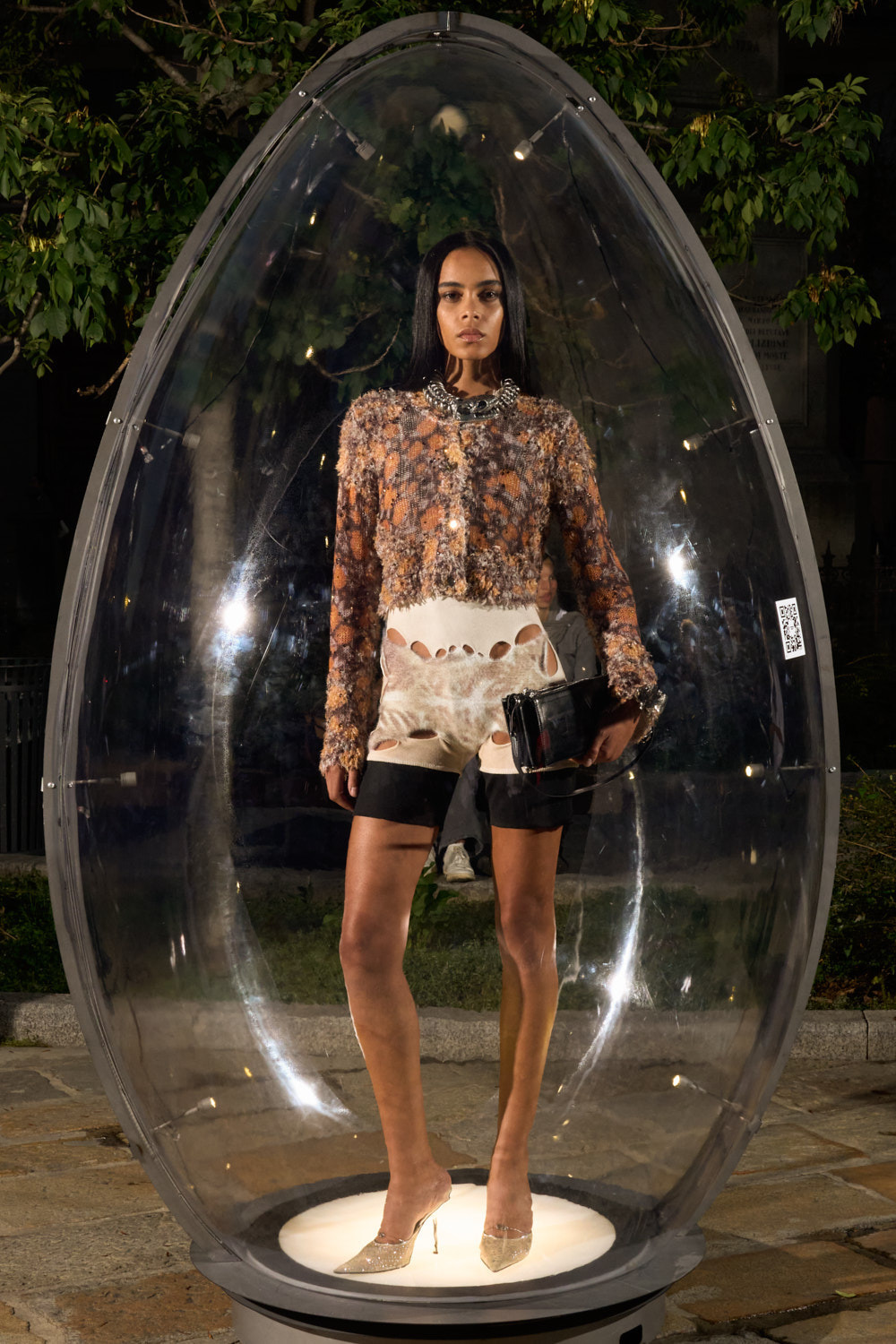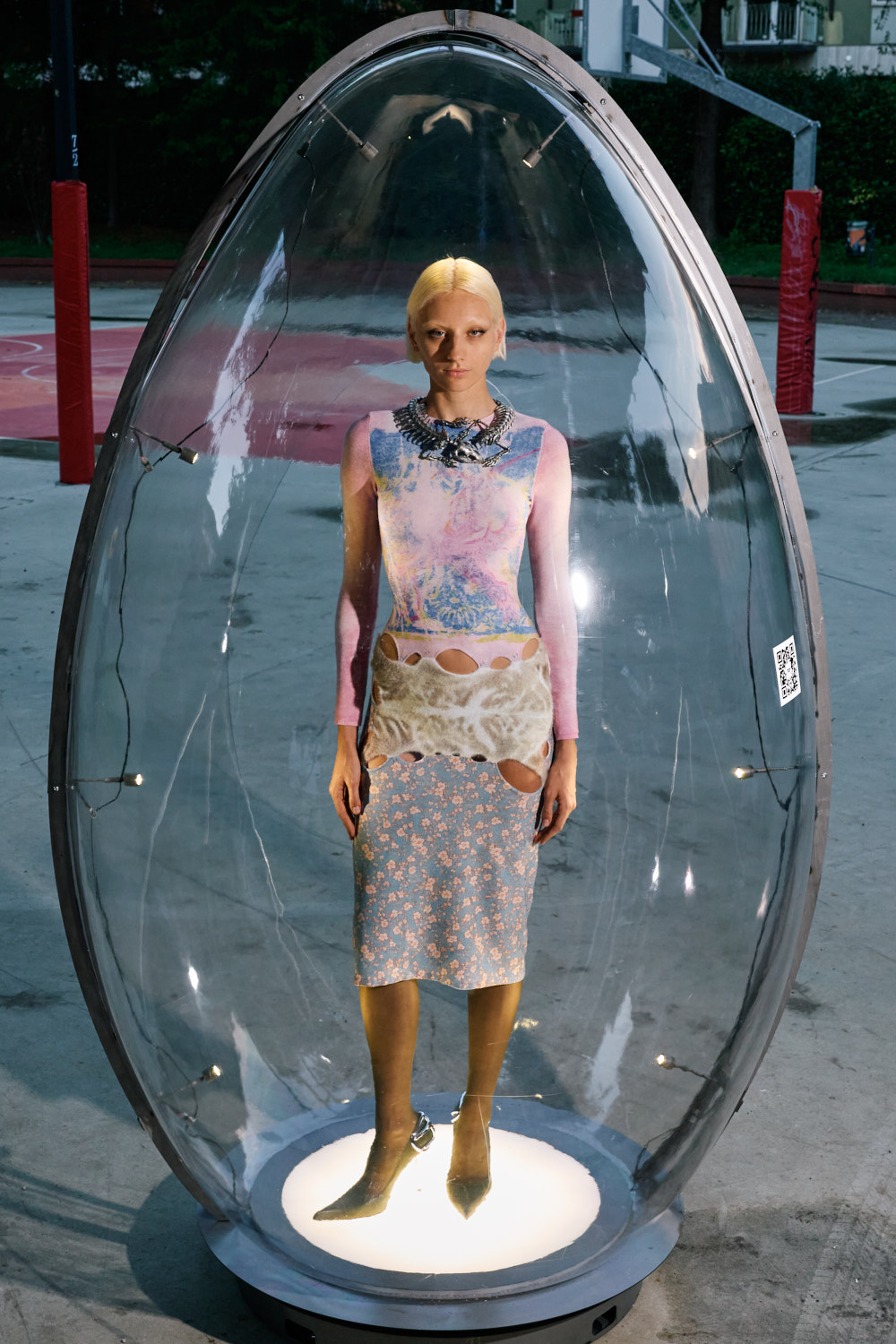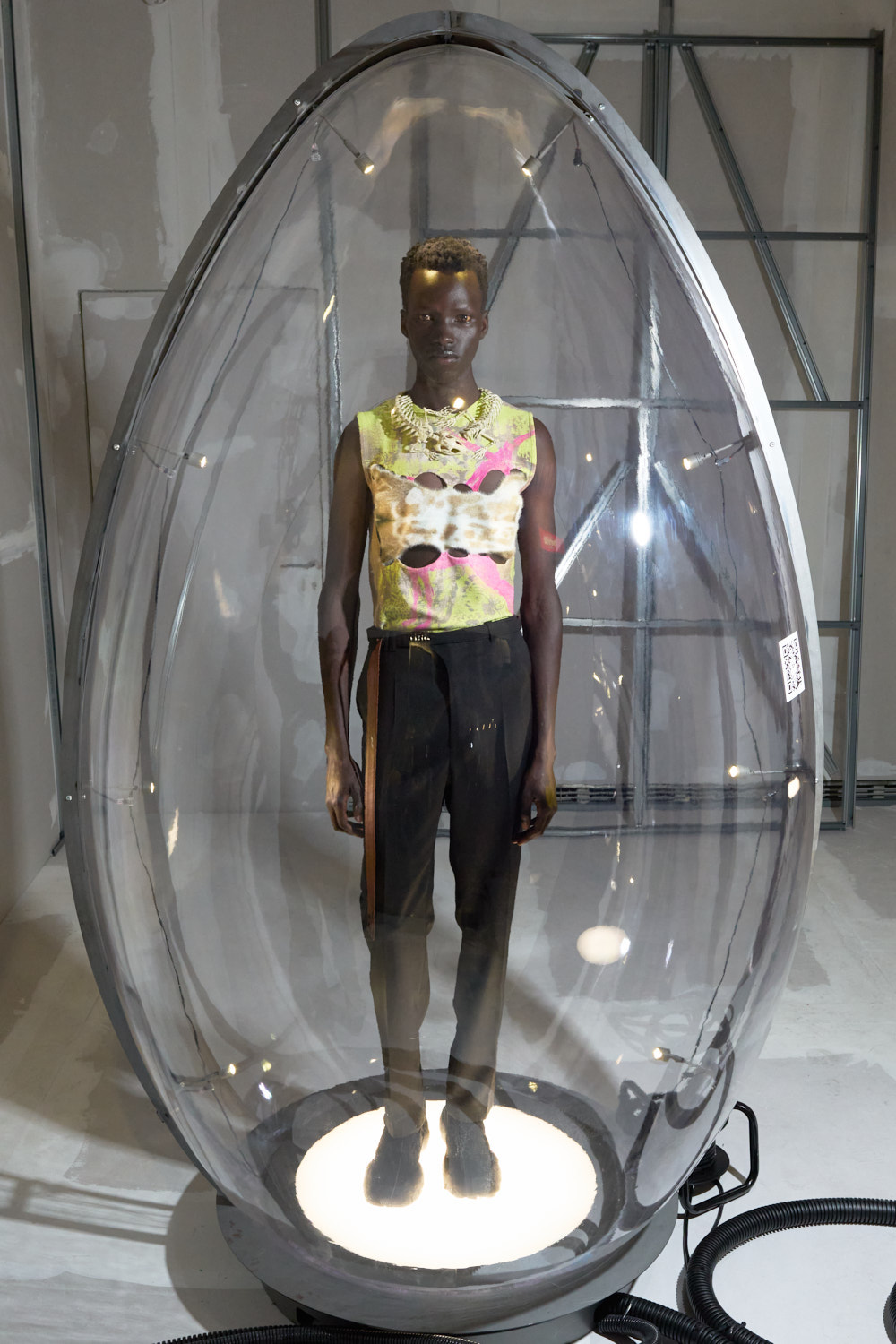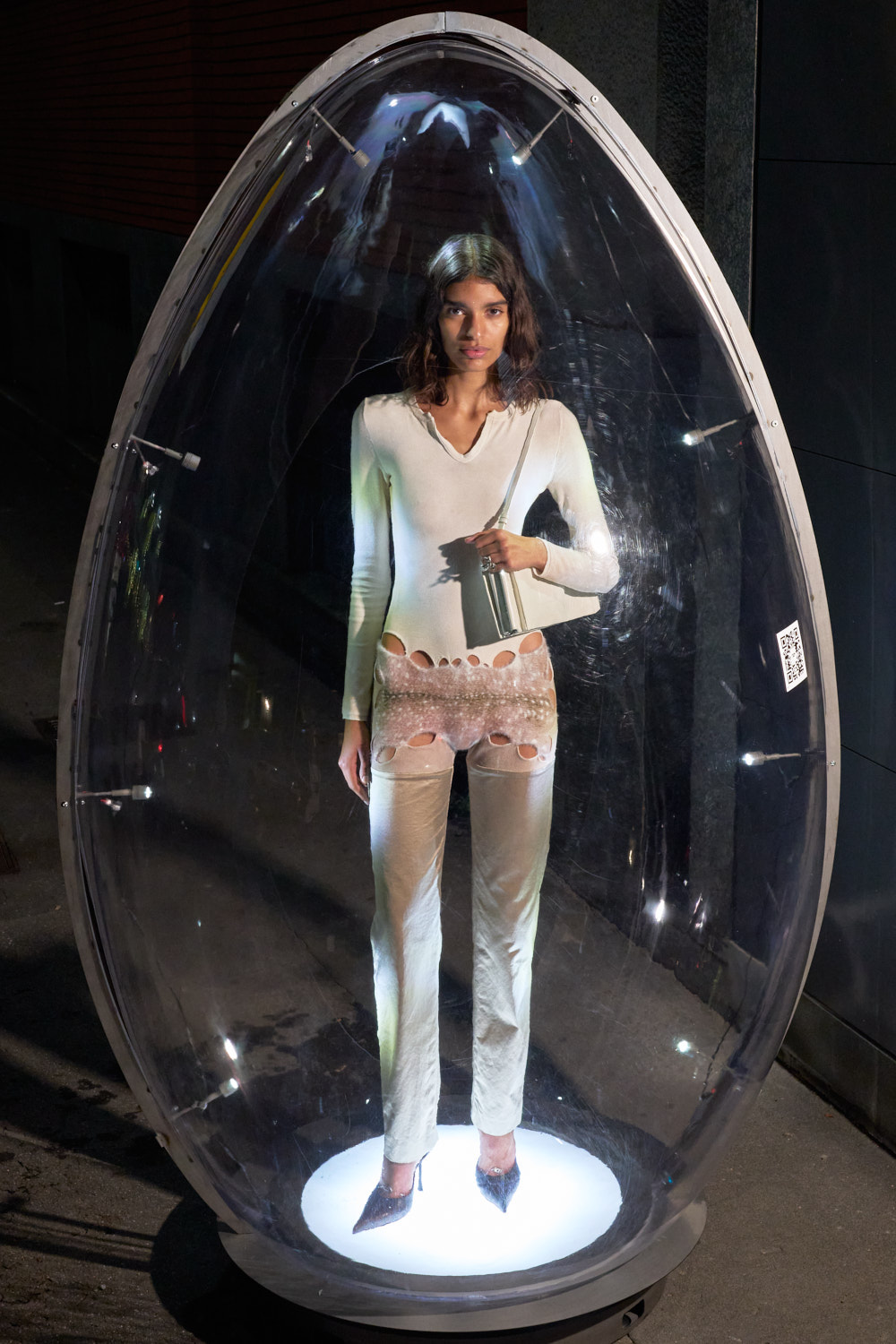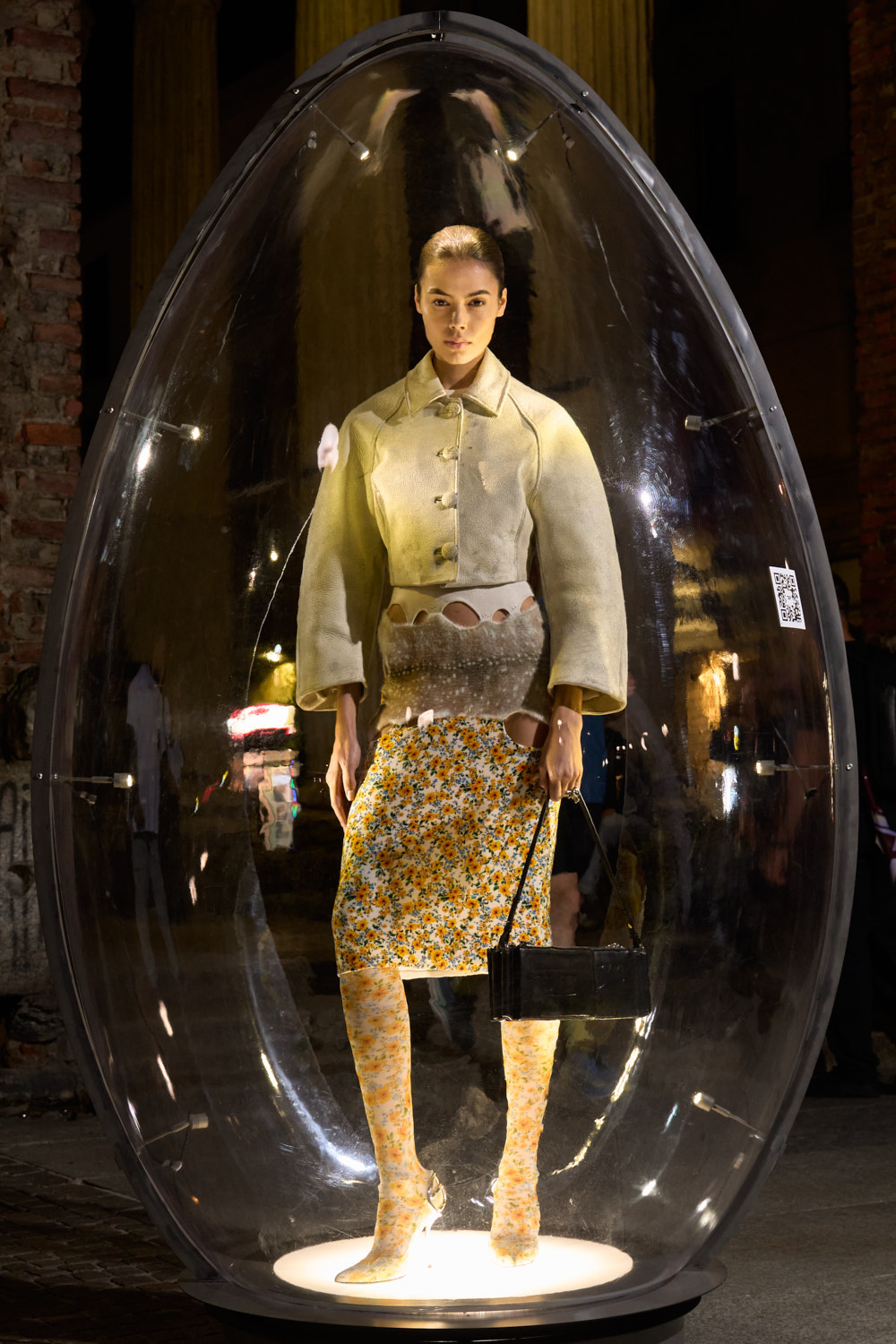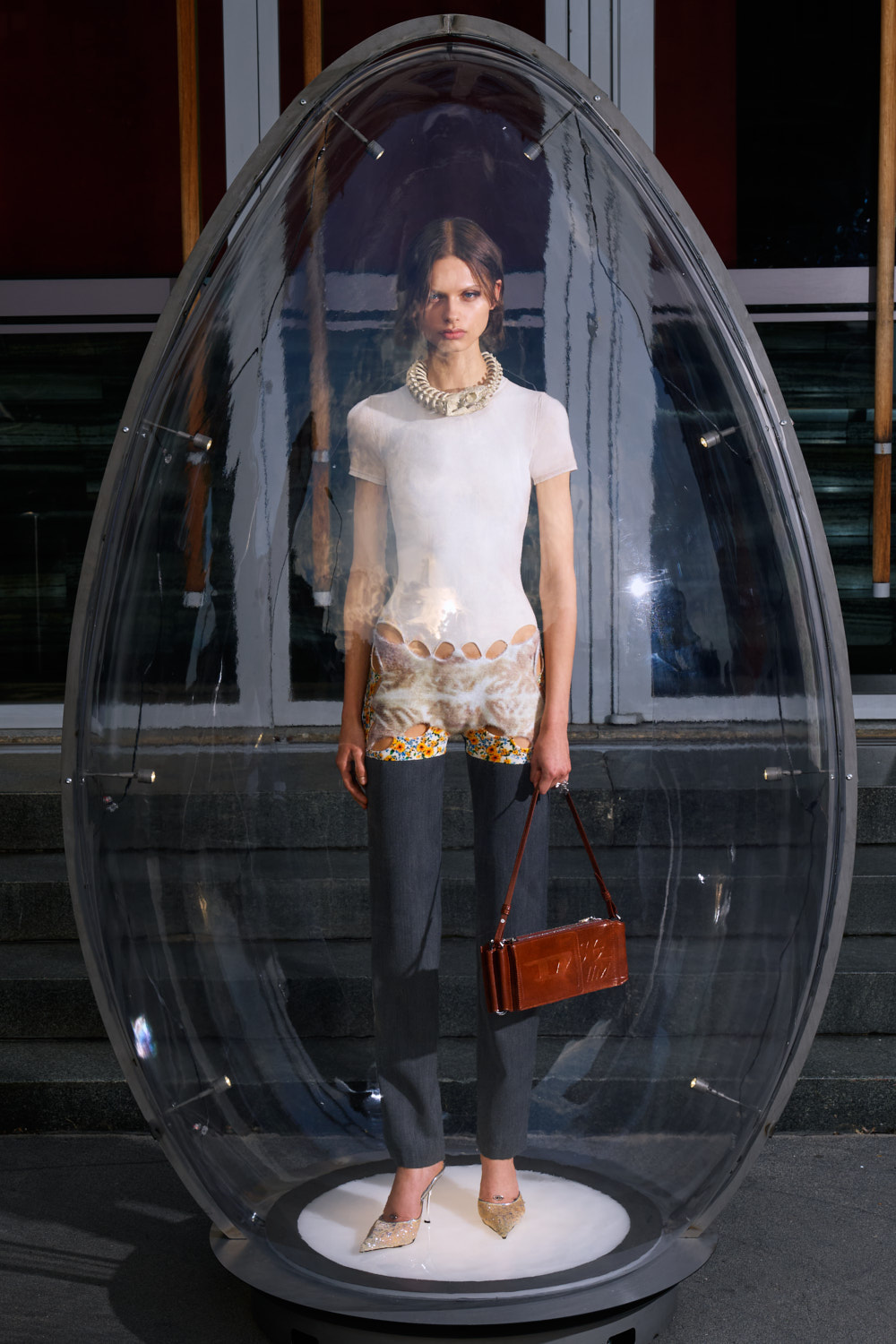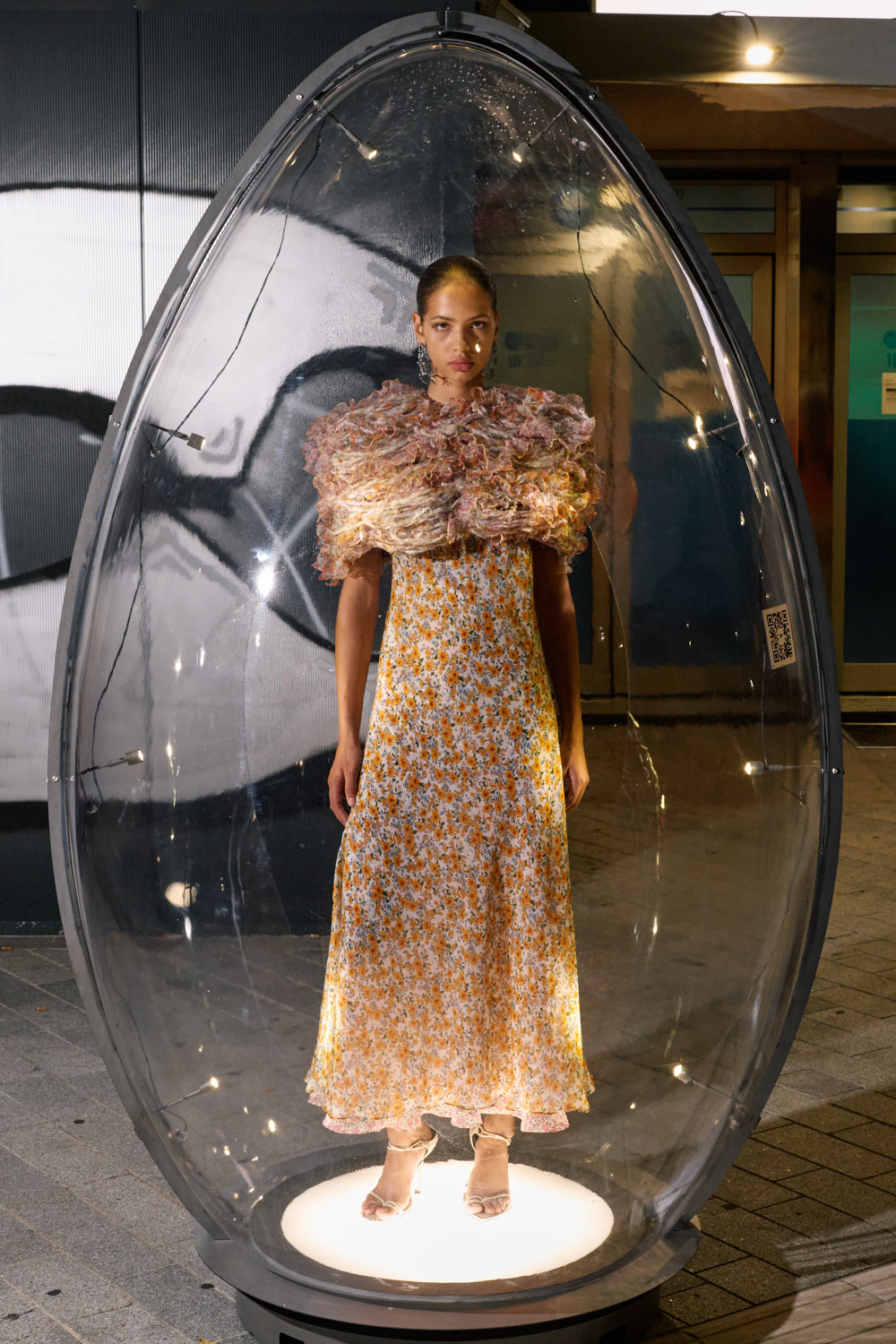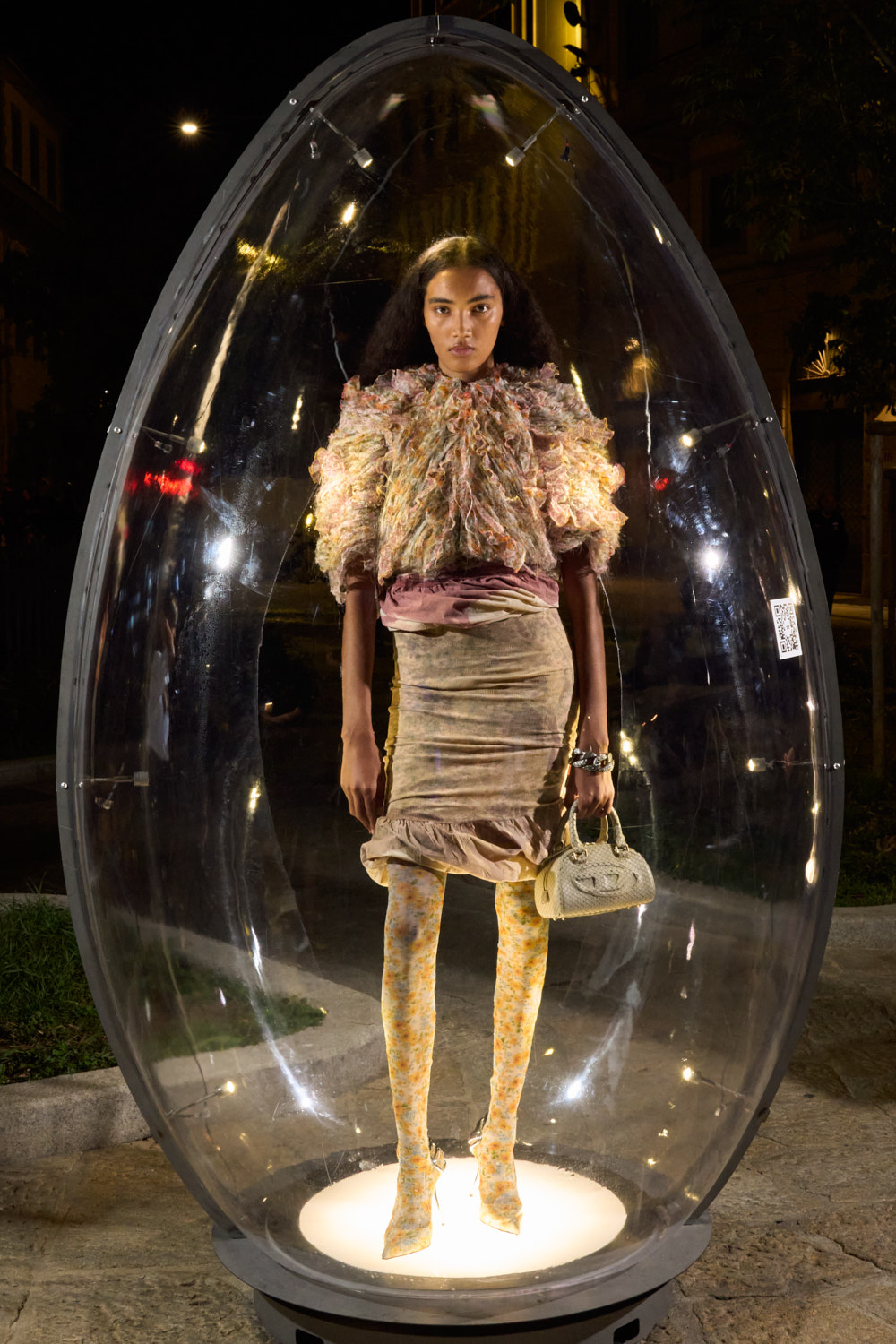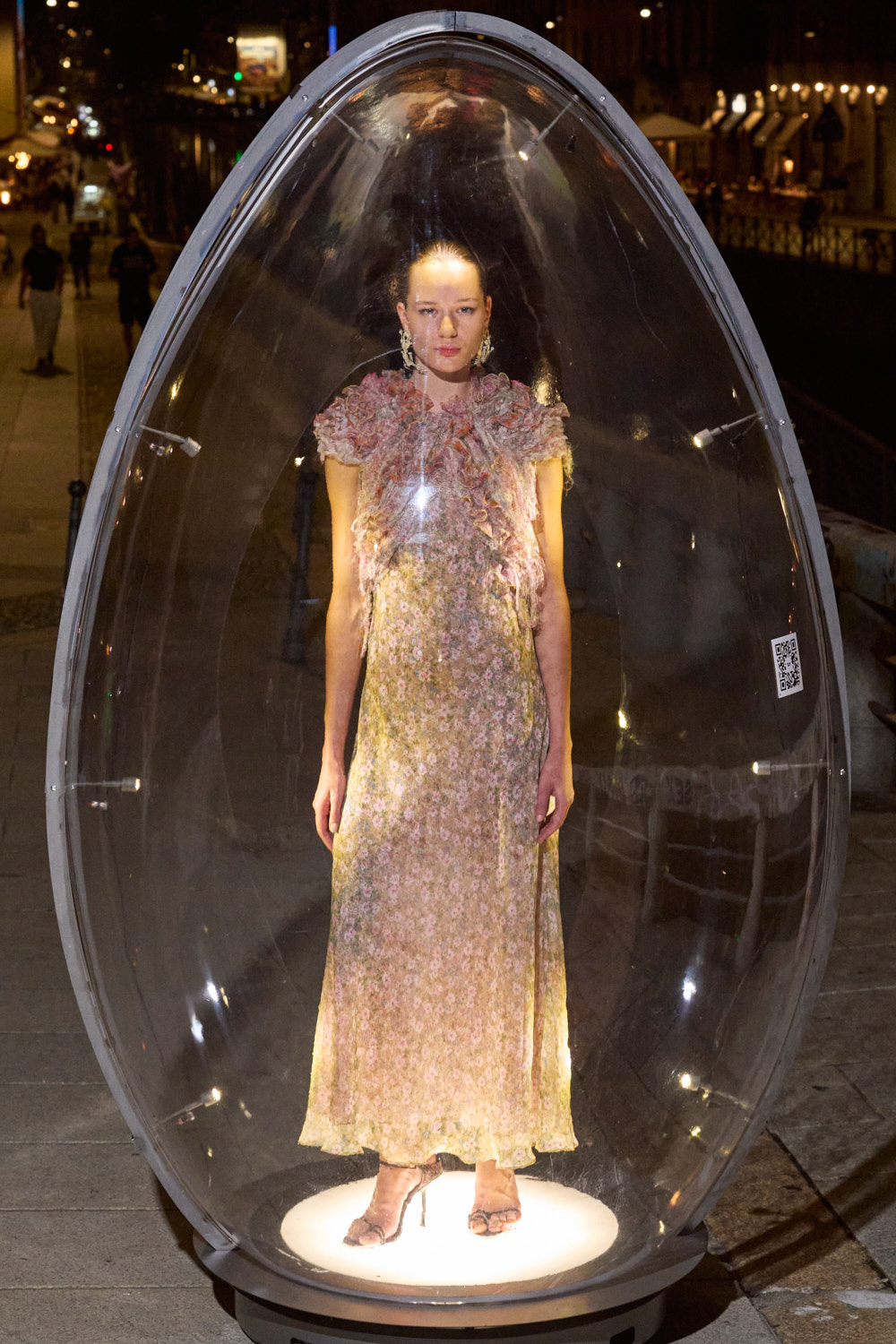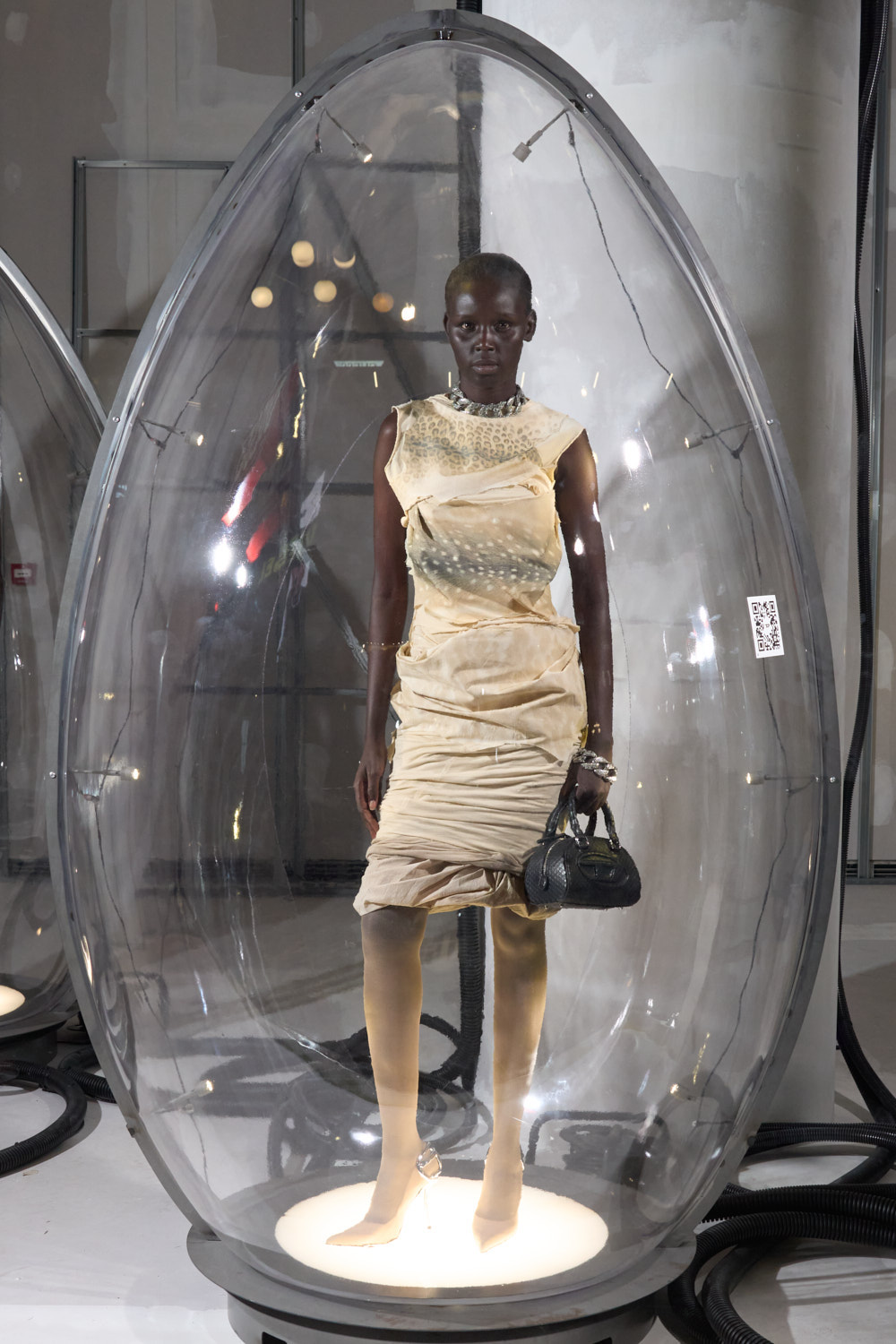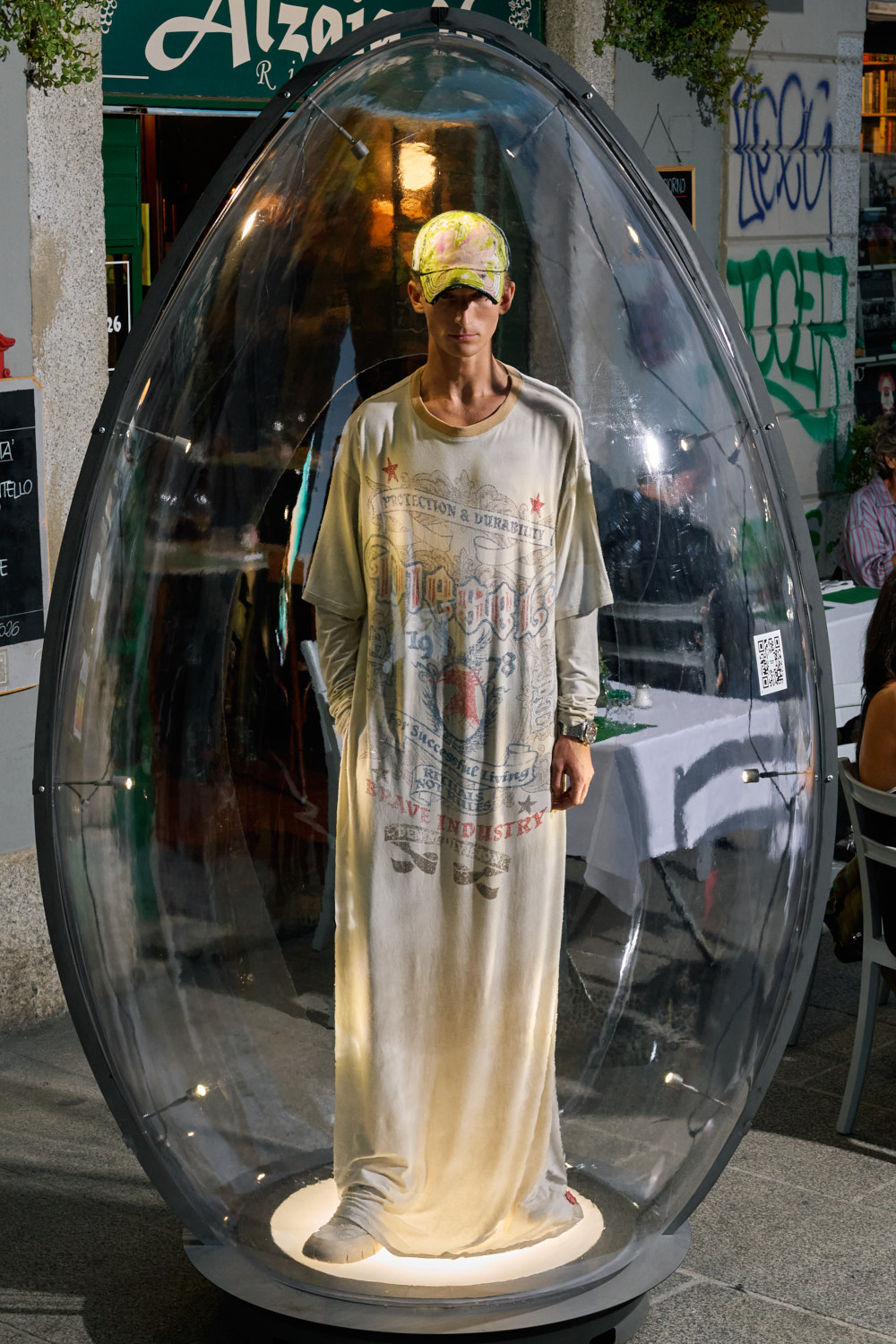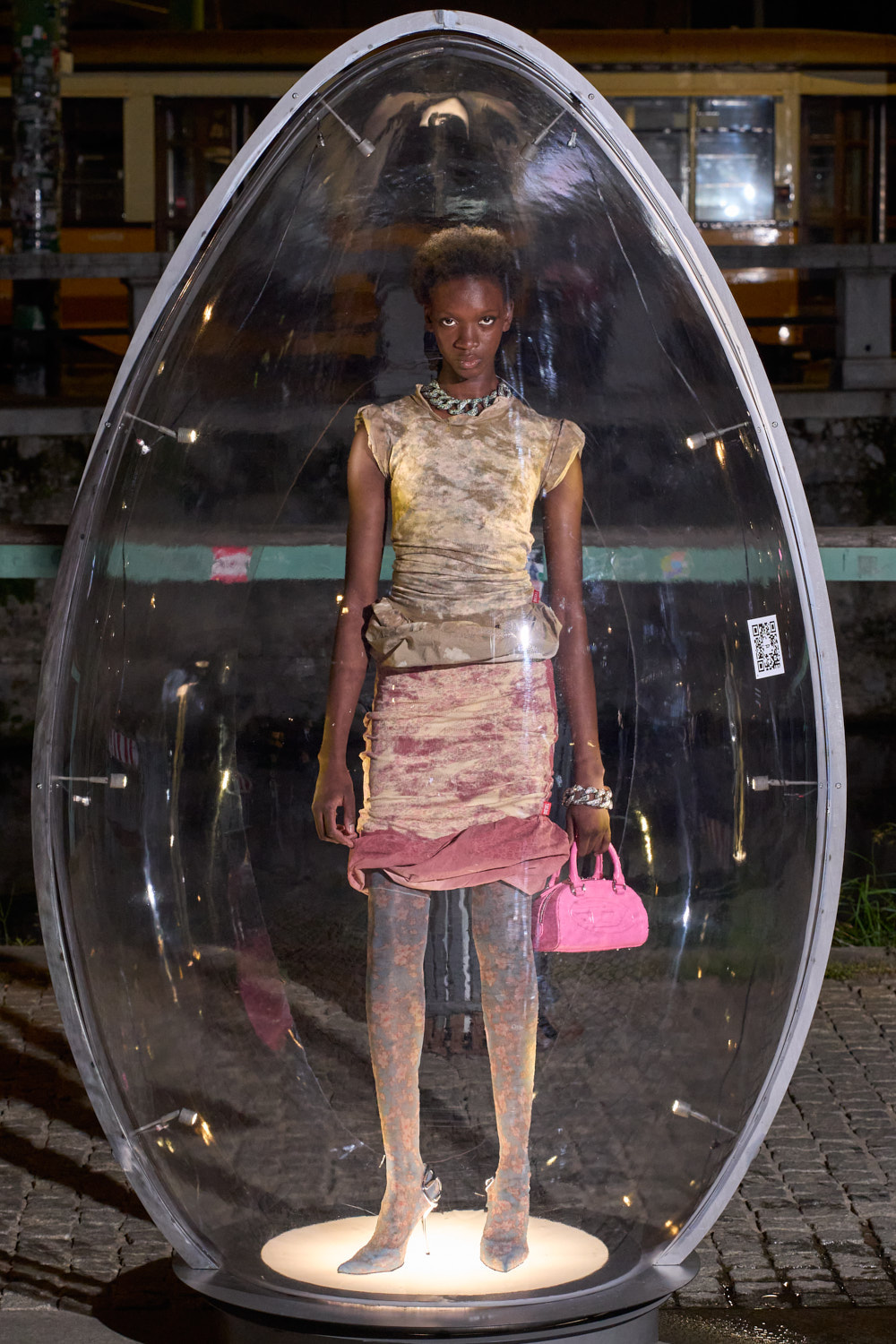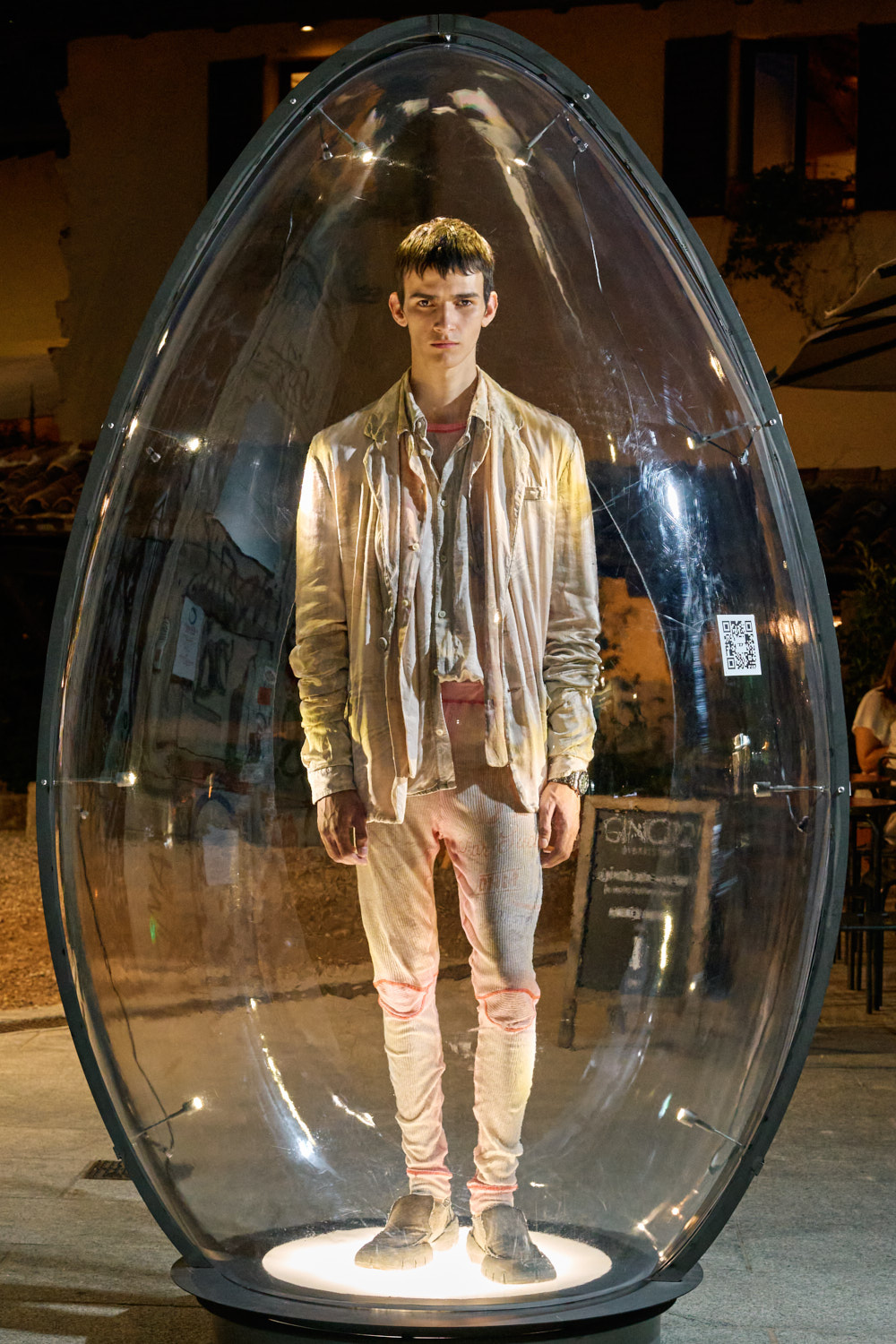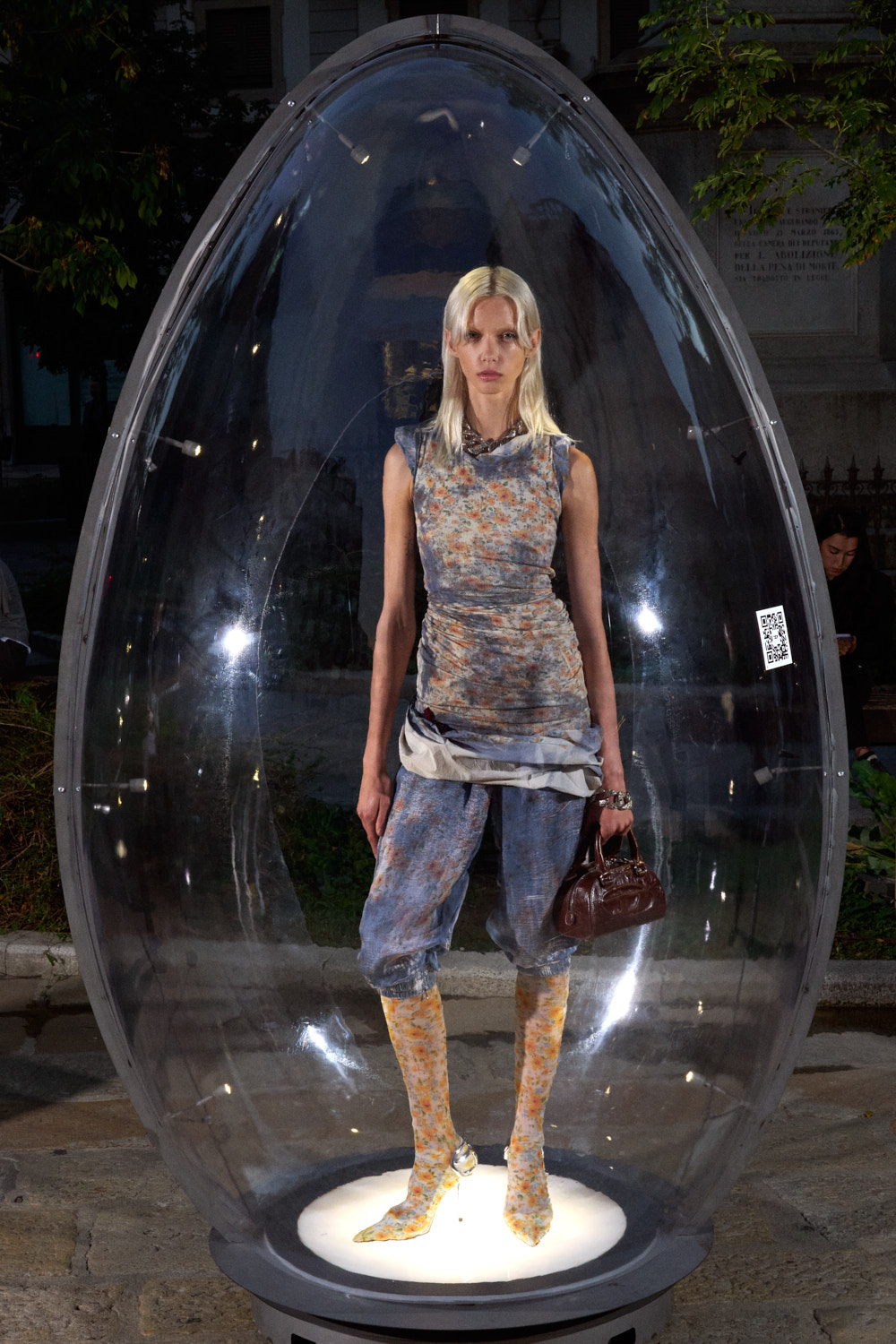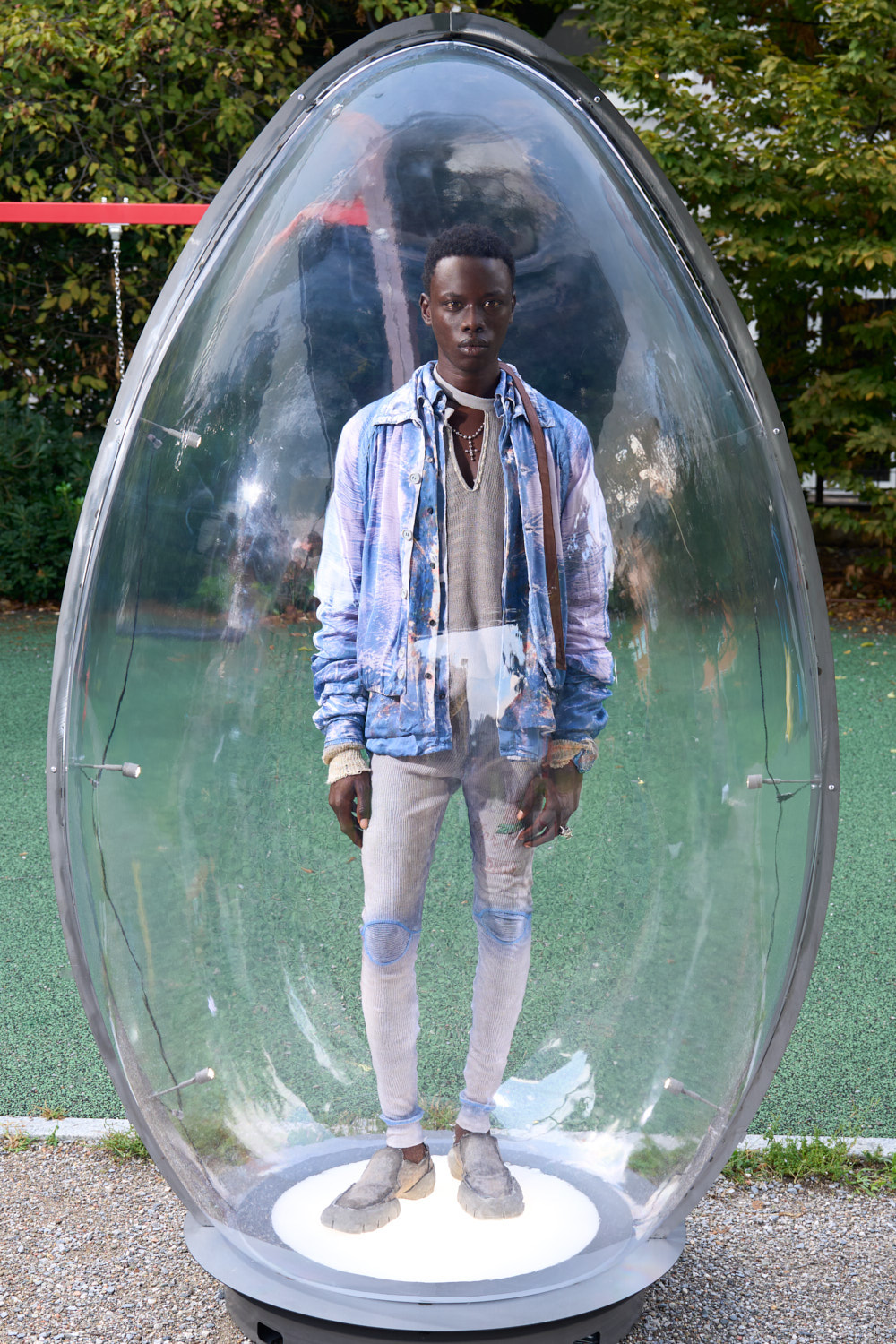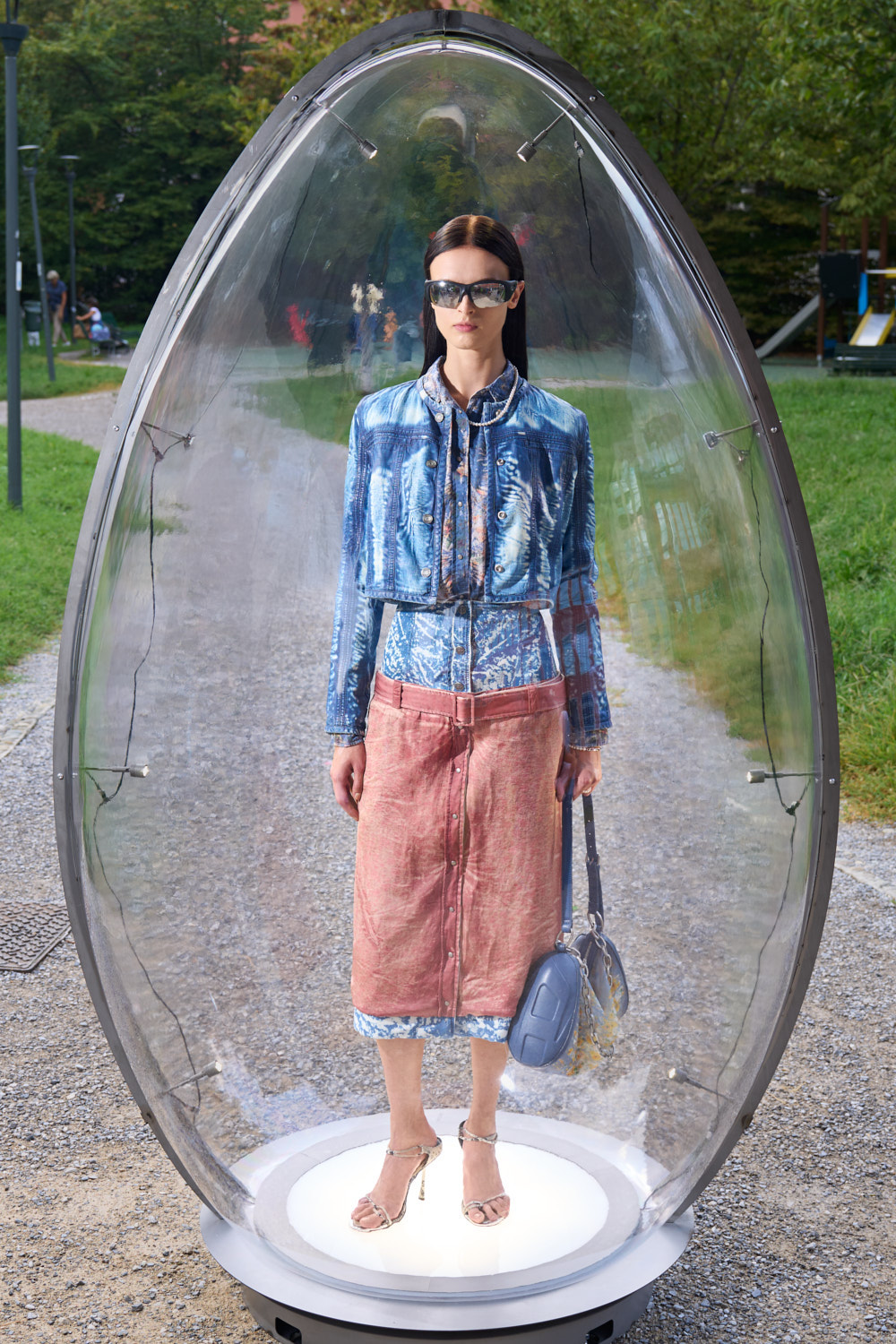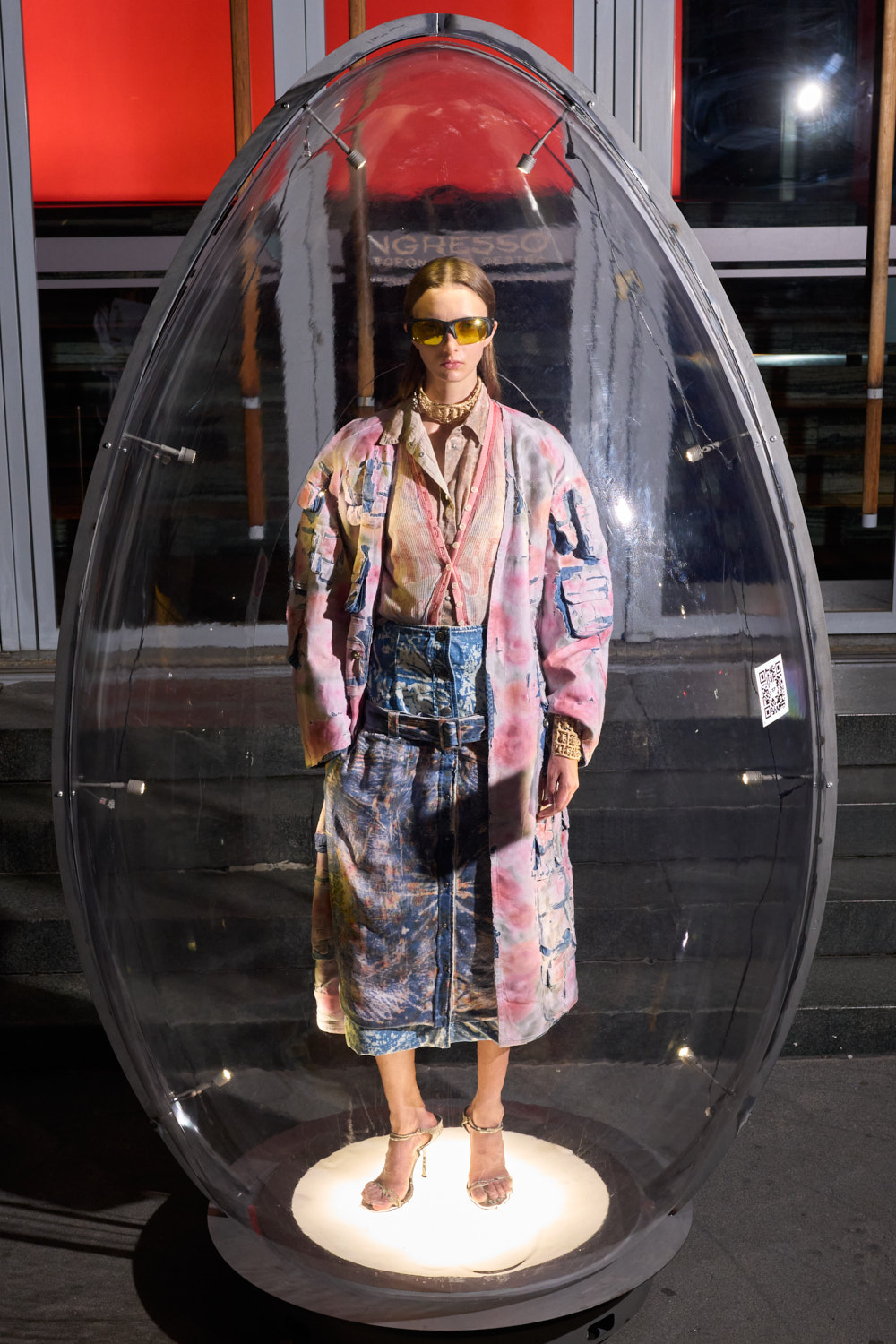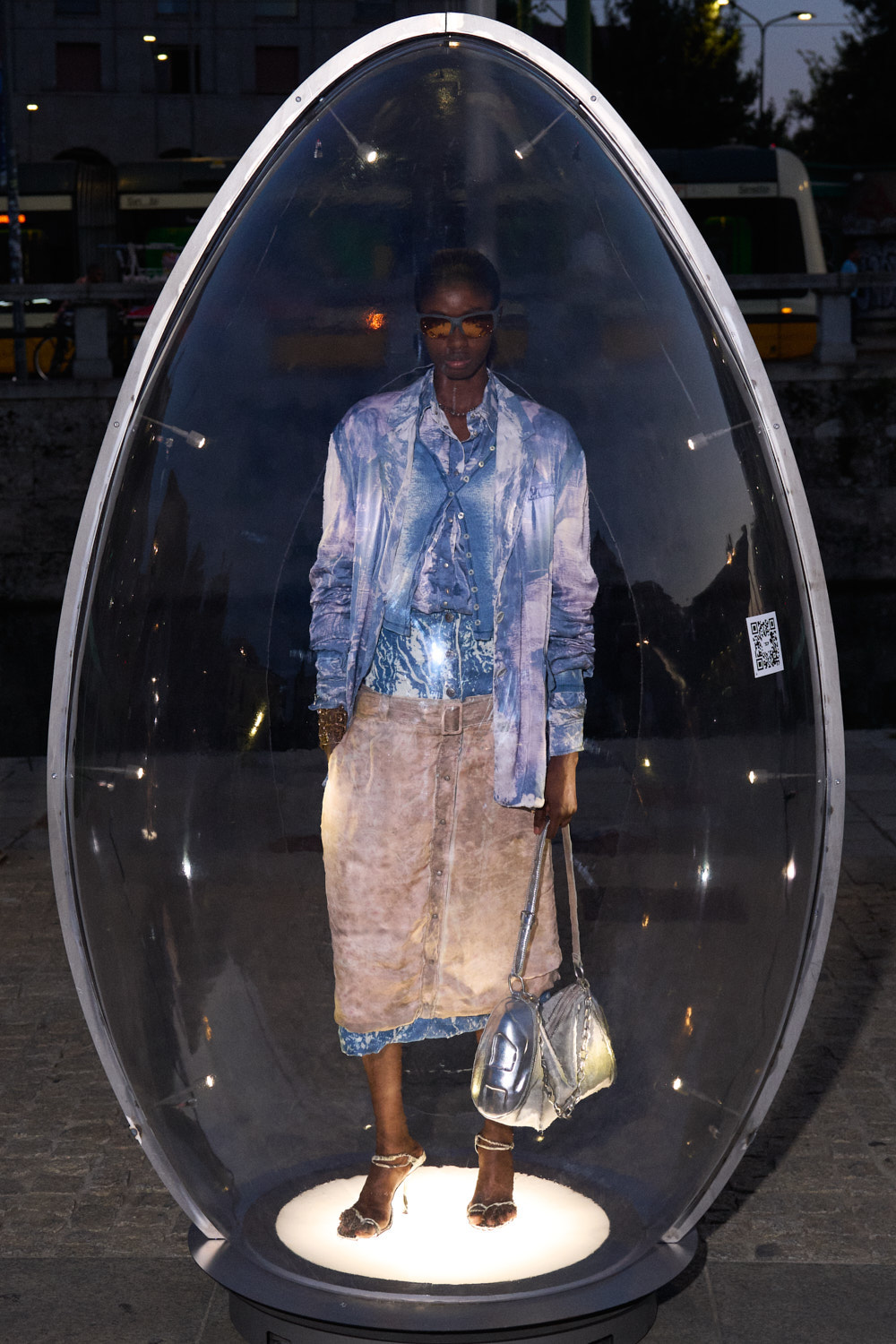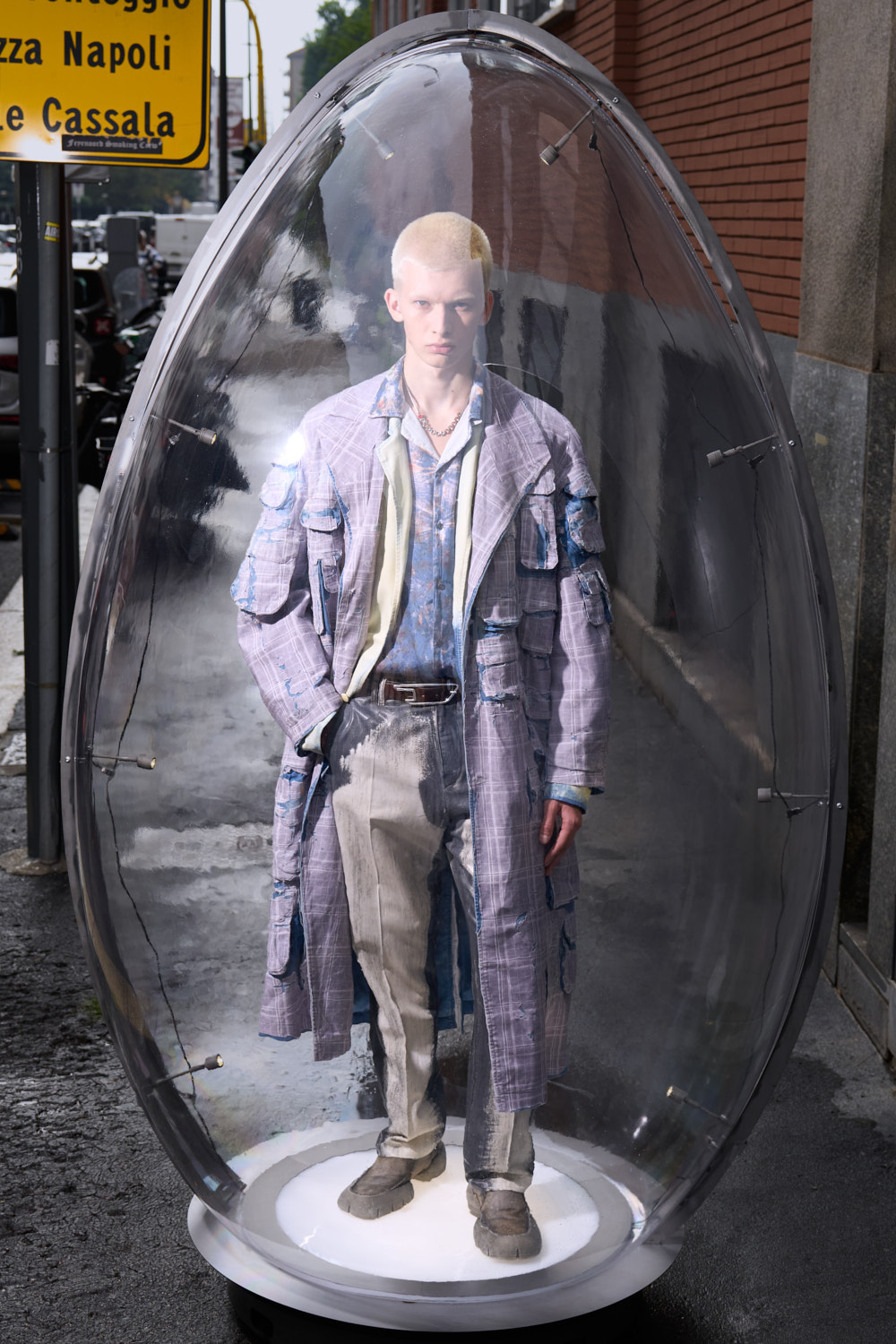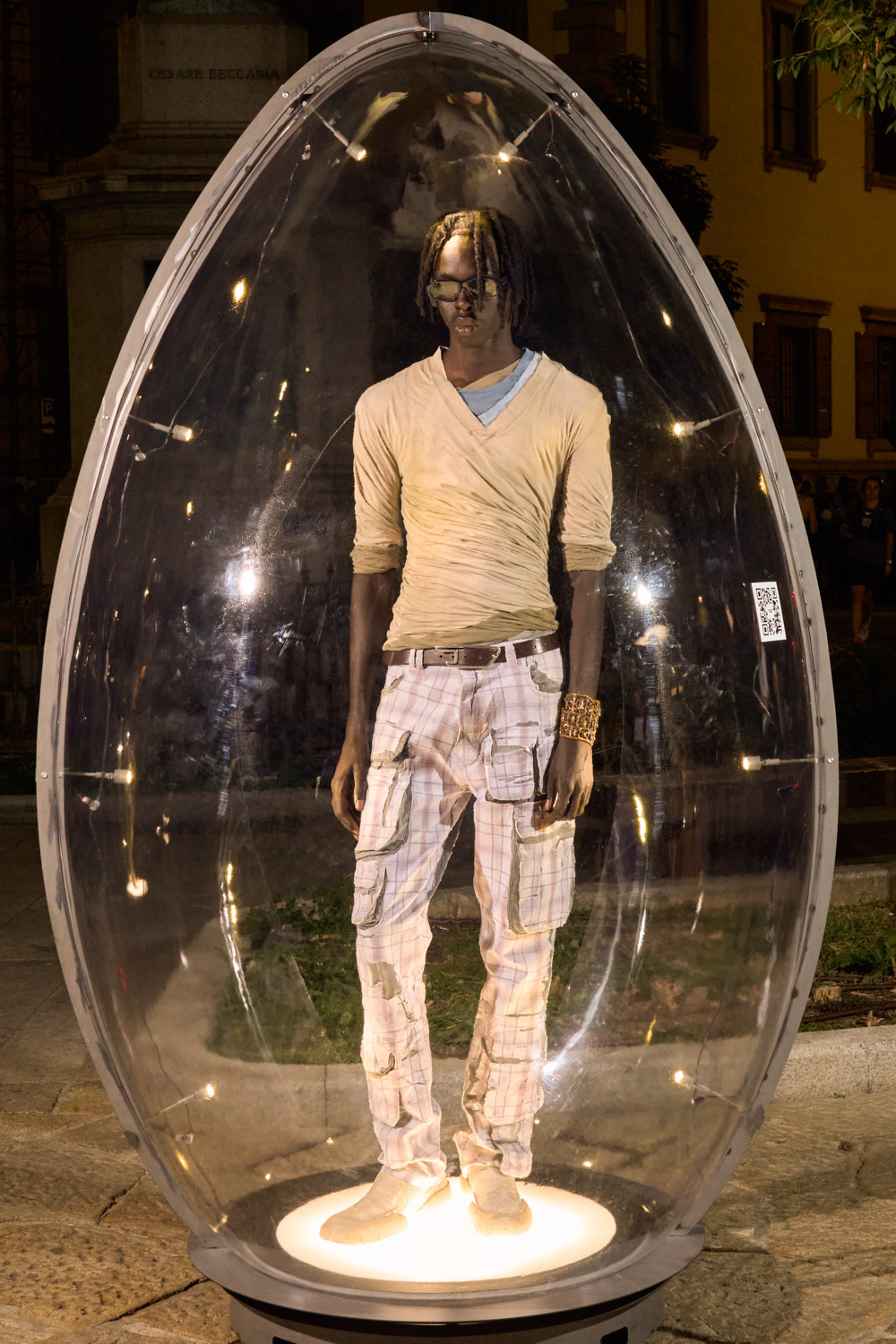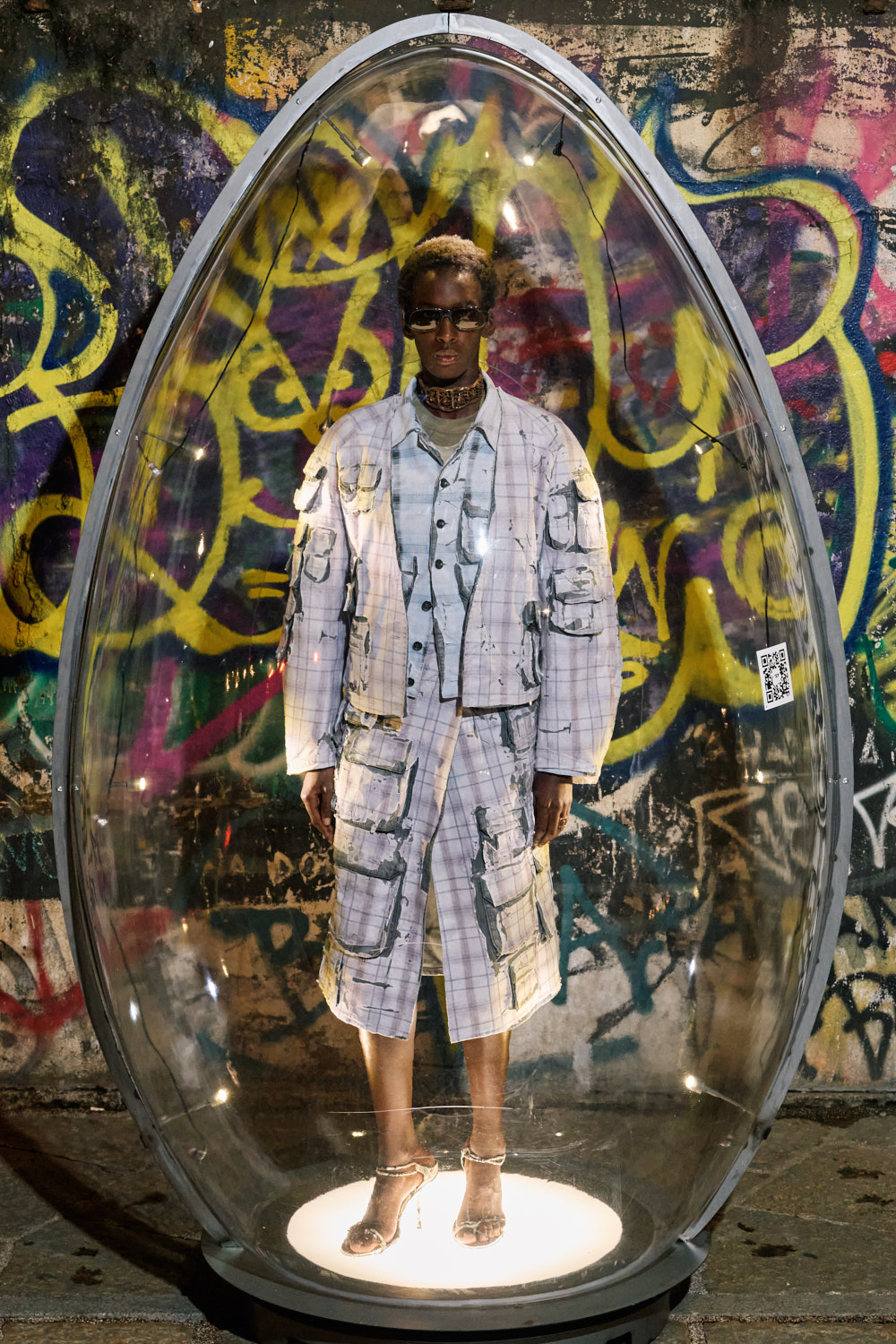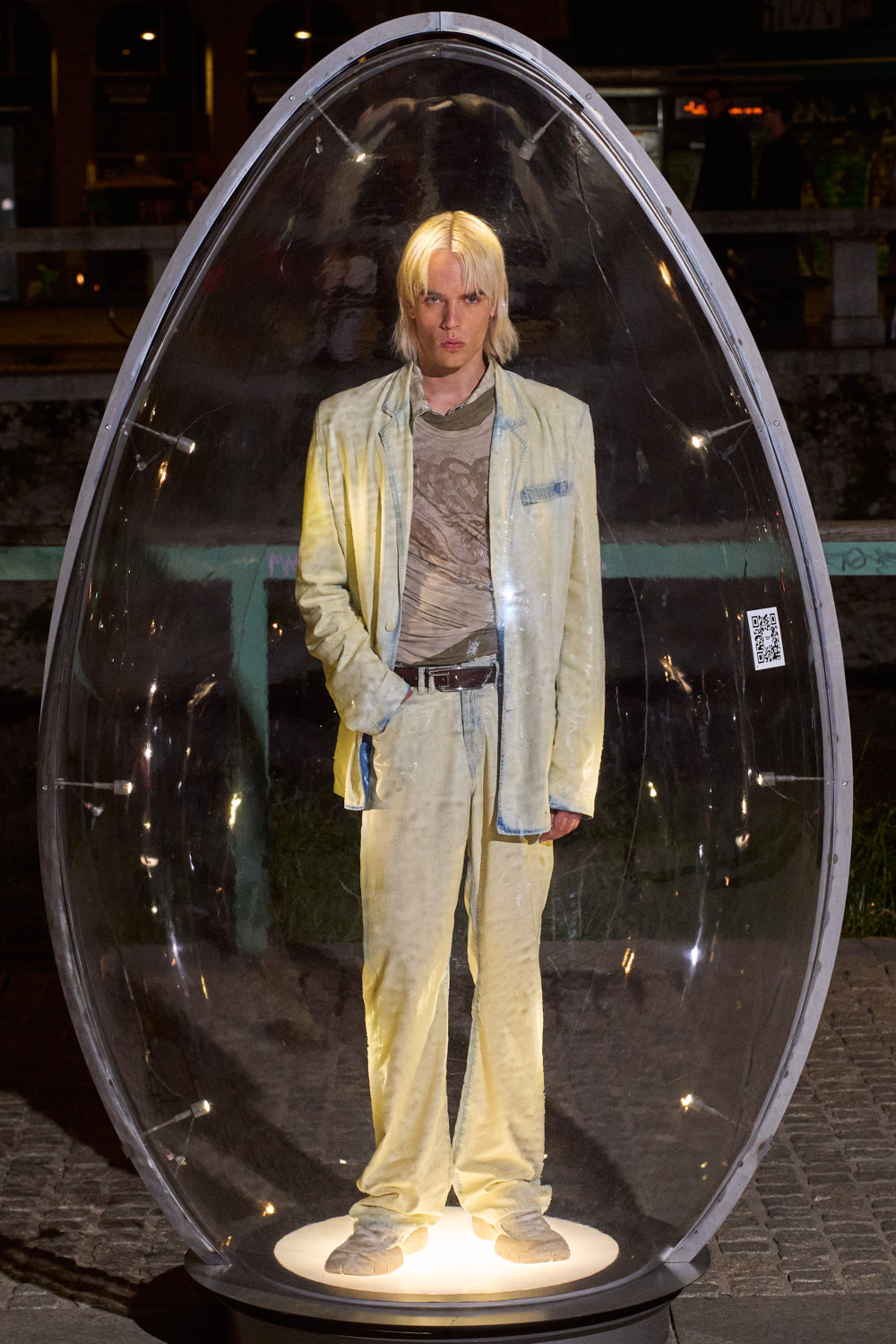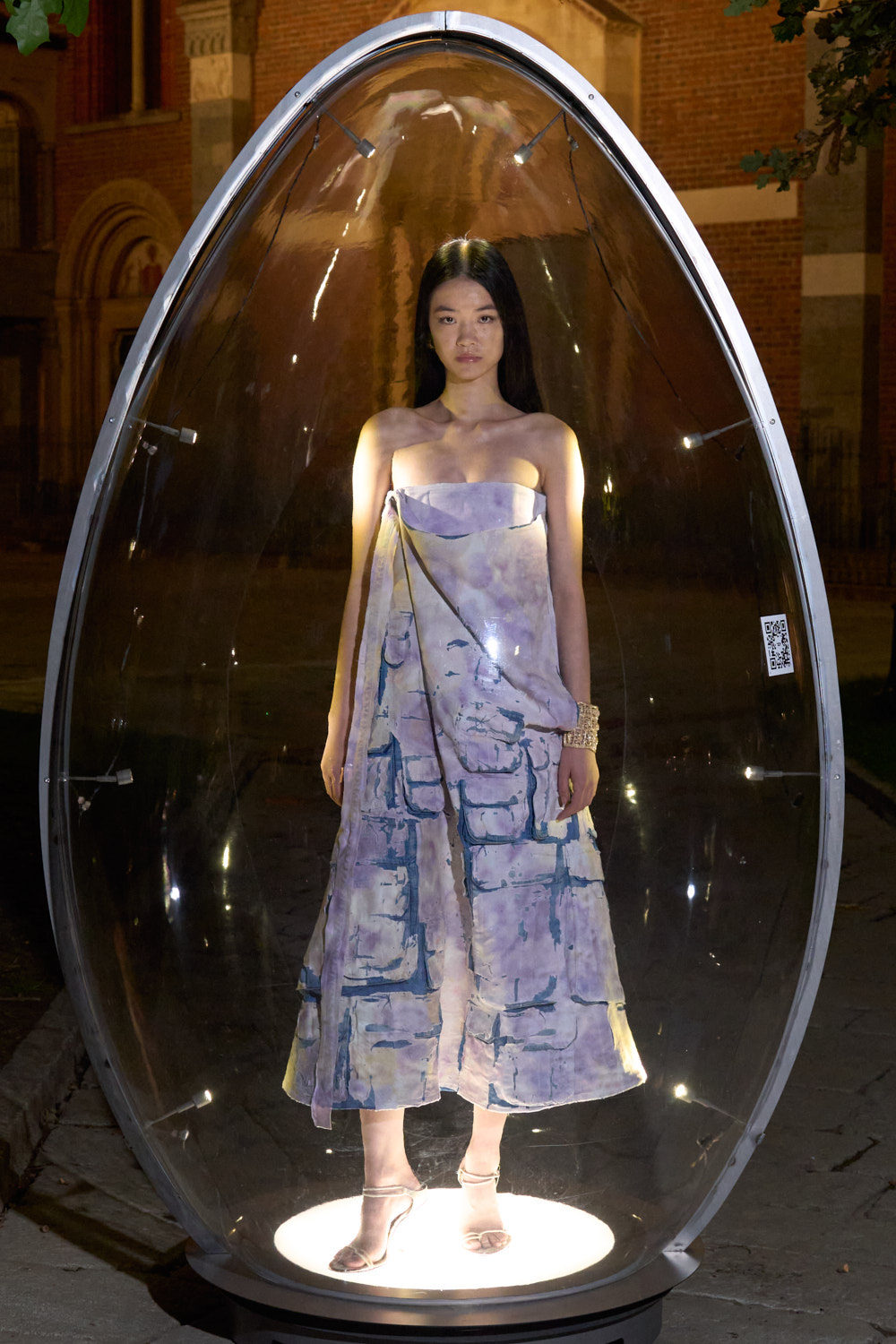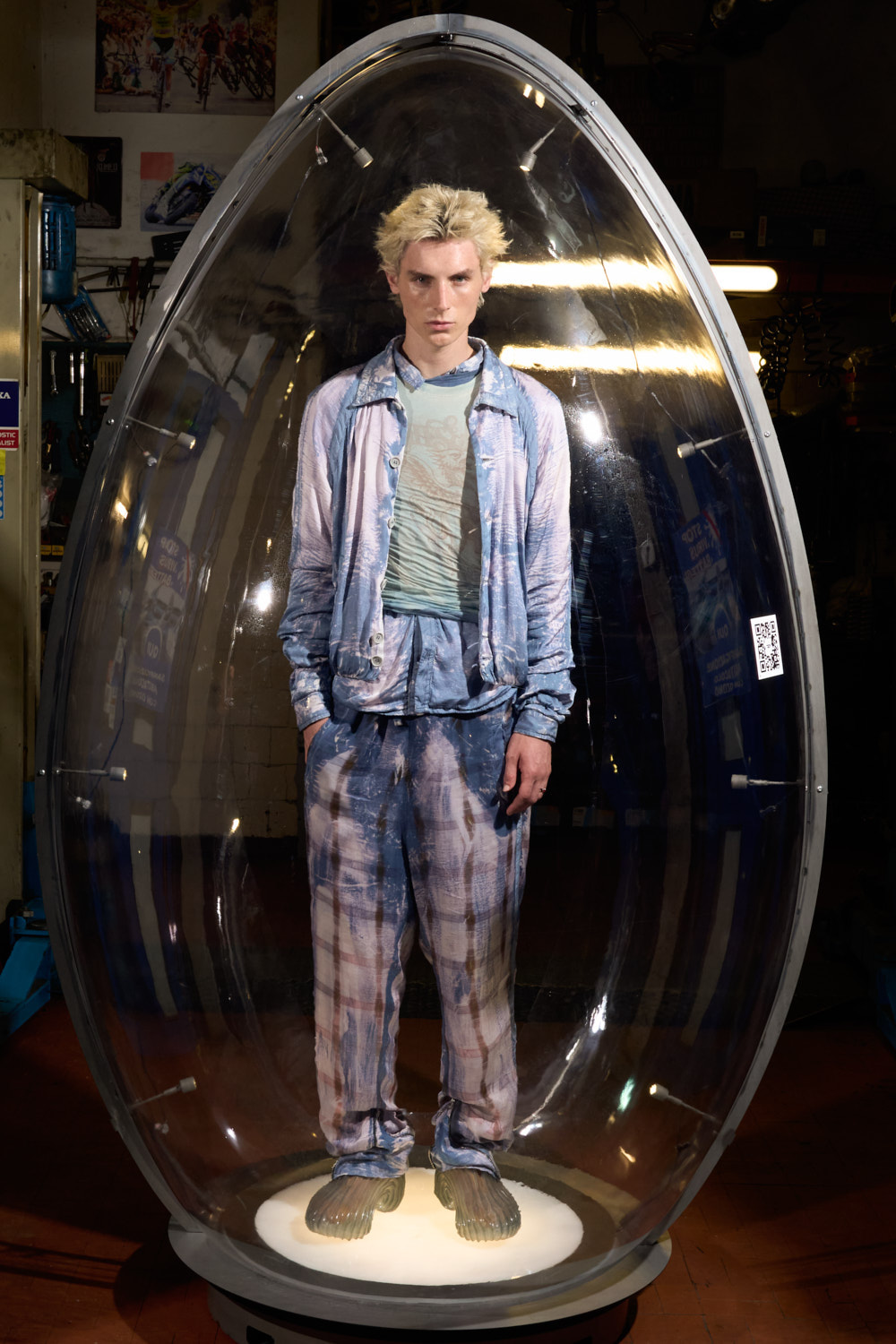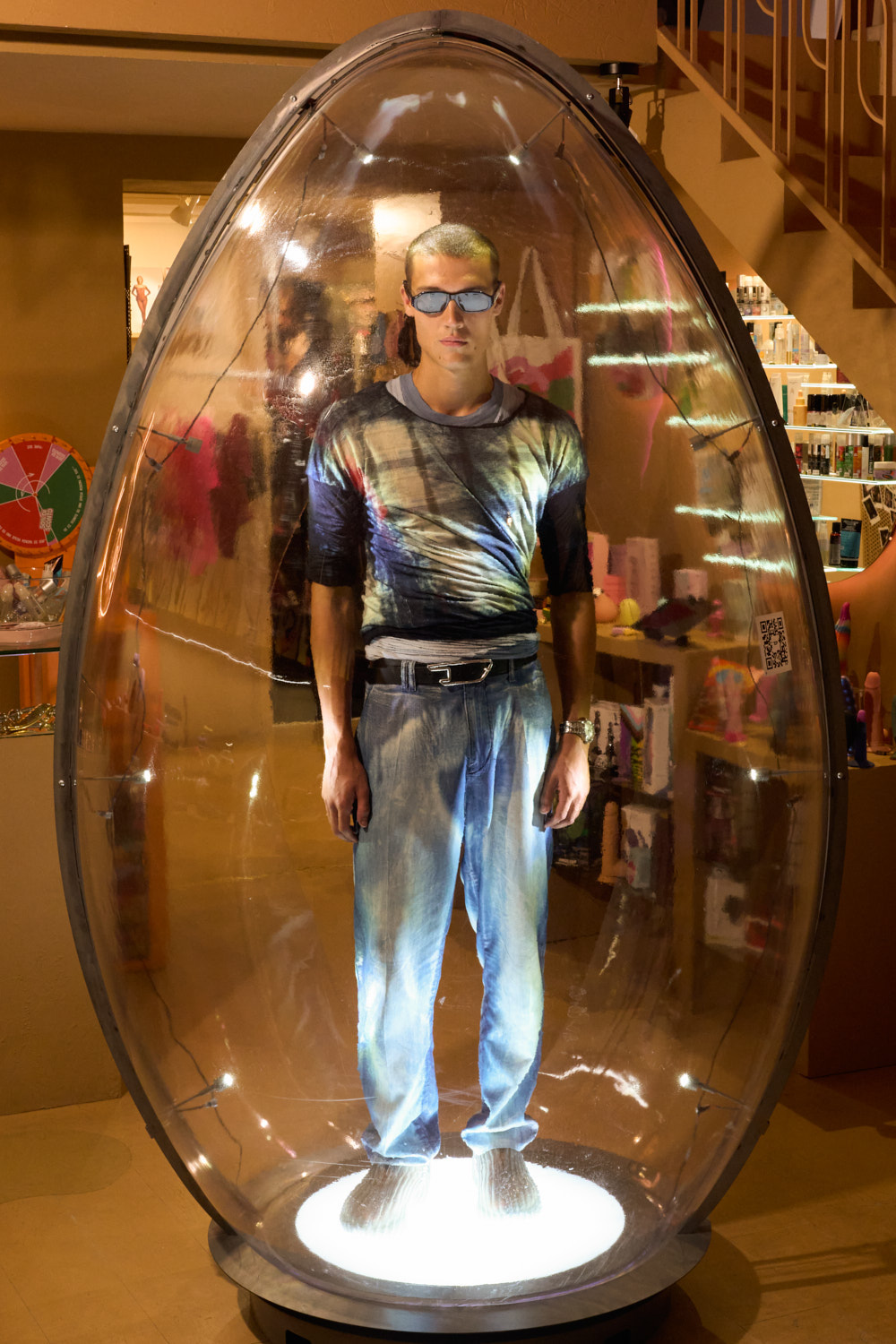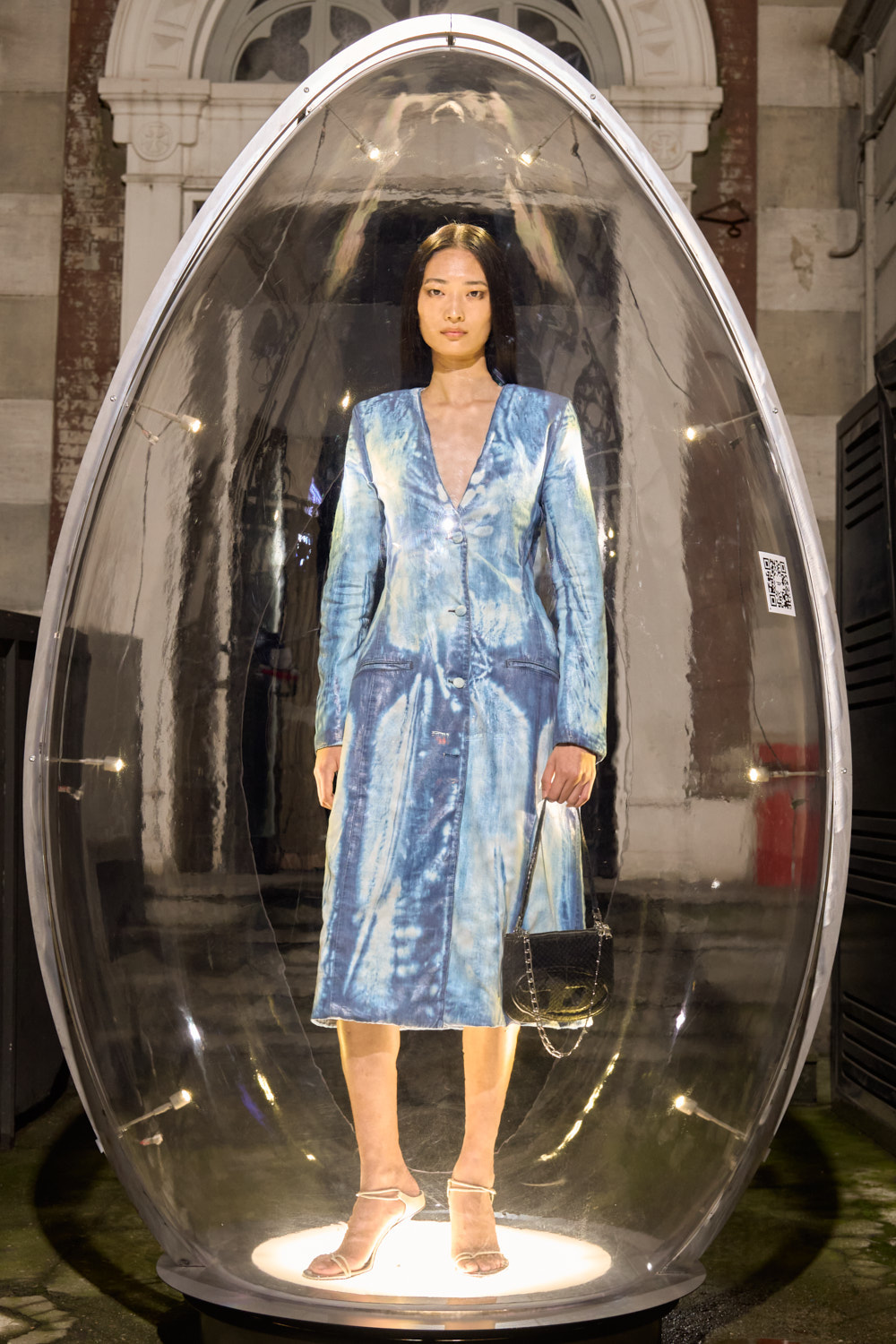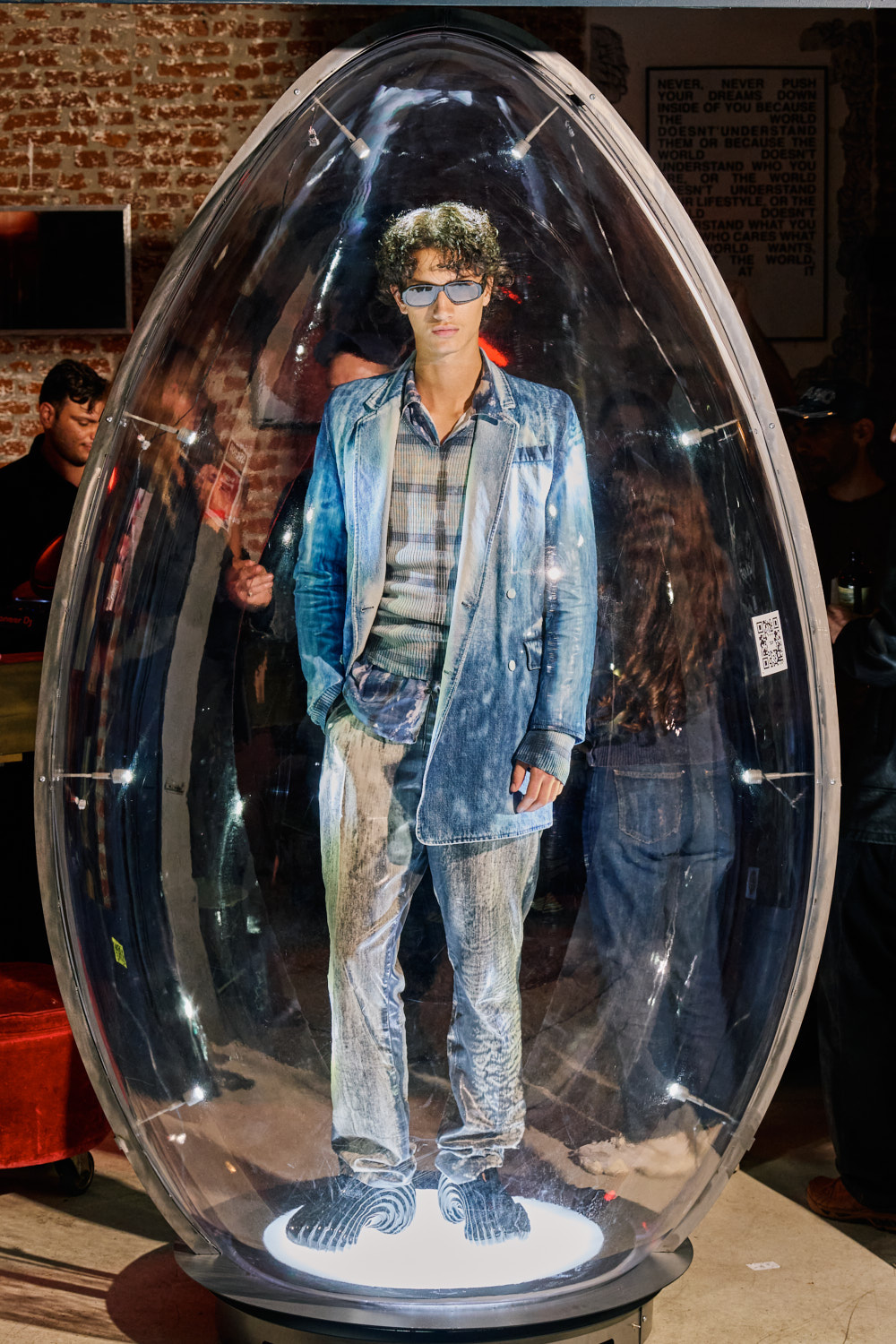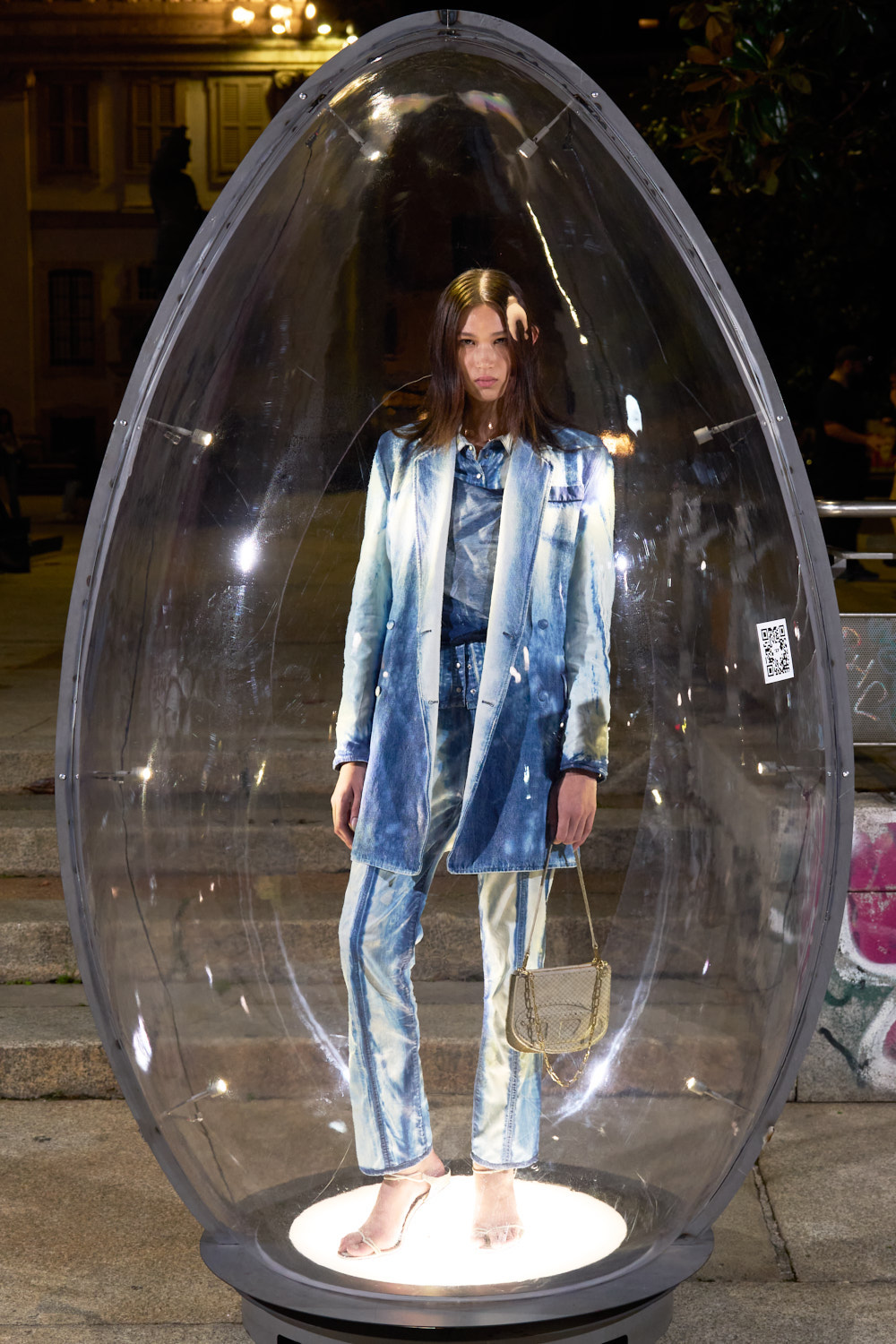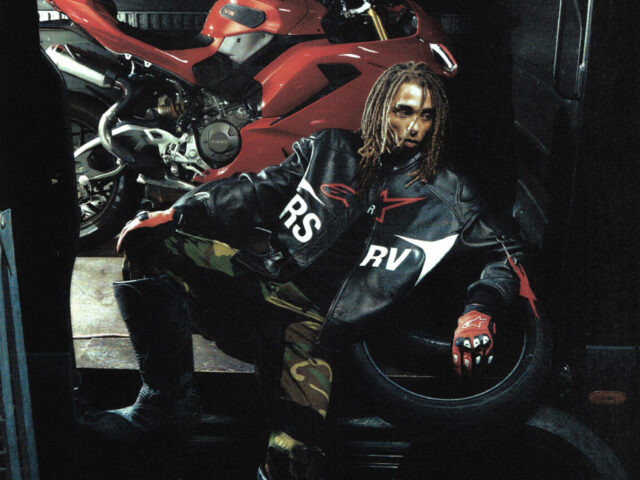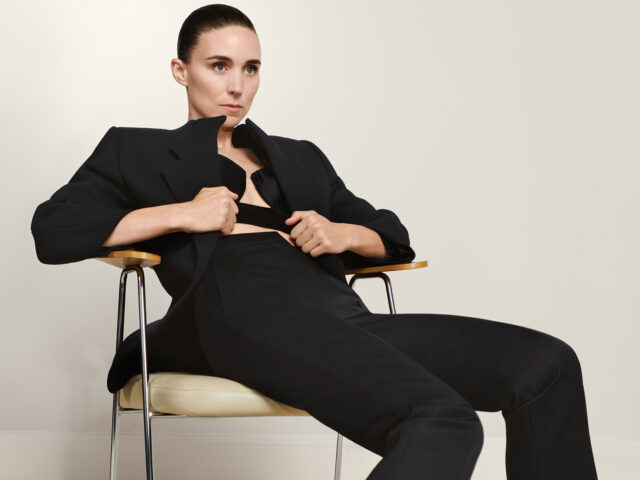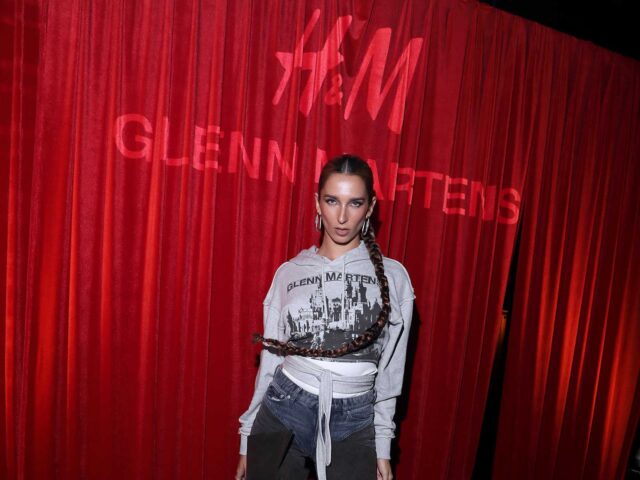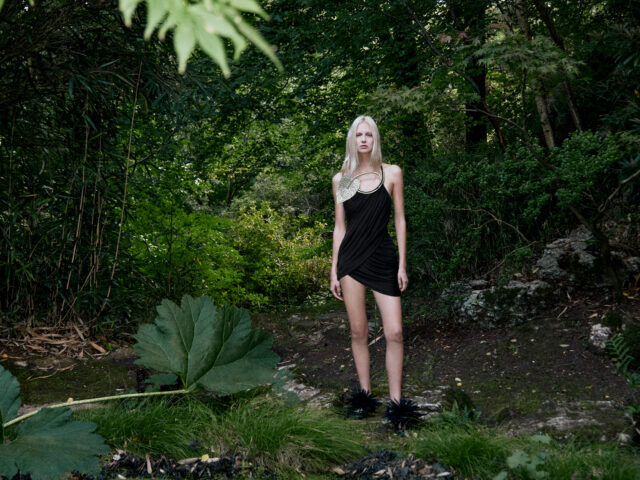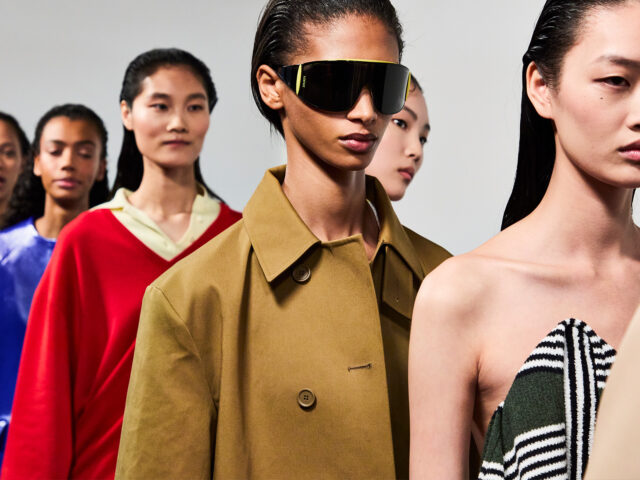In a season saturated with spectacular fashion shows, conceptual installations, and shows with cinematic ambitions, Diesel once again managed to shake up the Milanese fashion scene. For his SS26 collection, Glenn Martens did not present a runway show. He did not offer an A-list seating arrangement. He did not set up a front row for editors, celebrities, or VIP buyers. What he did was—literally—scatter his vision throughout the streets of Milan. He distributed 55 look eggs throughout the city: real models, contained in transparent glass capsules shaped like eggs, ready to be found by anyone. Because the message was as clear as it was subversive: “Fashion is a game, but one that everyone can play.”
Supported by the City of Milan, Diesel Egg Hunt activated more than just a viral narrative: it was a profound commentary on access, spectacle, and power. In a world where luxury fashion is becoming increasingly exclusive, restrictive, and encrypted in unintelligible codes, Martens dismantles the system from within, inviting the general public to not only observe, but participate, compete, and, if they are fast enough, win. The egg—a symbol of beginning, fragility, potential—becomes a metaphor for this new phase of Diesel: a brand that is not afraid to deconstruct itself, rethink itself, and expose its aesthetic guts to an audience that is no longer satisfied with the surface.
The 55 looks scattered throughout the city function as pieces of a material and visual puzzle. The collection itself is structured around the notions of trompe l’oeil, layers, inversion, and fragmentation: sleeveless dresses as body wraps, satin denim that simulates aging through laser treatment, garments composed of fabrics that appear to be forcibly fused together, reversible coats with fake pockets, pieces that are larger on the inside than on the outside. Everything seems designed to challenge perception, as if Martens were playing with the viewer’s eye, forcing them to question what is real, what is illusion, what is inside, what is outside.
The collection includes dresses made of crushed floral chiffon reminiscent of organic clouds; knitted jumpsuits with barely basted sections, suggesting aesthetic decomposition; sleeveless biker jackets; and multi-pocket coats open like functional ruins. Even the furs—from animals that never existed—serve as a visual metaphor for the artificiality of our consumerist fantasies. In terms of accessories, the collection introduces pieces that are as provocative as they are sculptural: soft, almost biomorphic Load-D bags; mules with floating mini Ds; oversized acetate glasses with mutant silhouettes; vertebral necklaces that hug the neck like post-human fossils.
The art direction, by Studio Dennis Vanderbroeck, accentuates this distortion: giant eggs refer to both museum display cases and cryogenic capsules. They are objects of desire, yes, but also containers of trapped bodies, waiting to be “discovered.” The casting—by Establishment NY—continues to focus on diversity. Ursina Gysi’s styling and Inge Grognard’s beauty direction reinforce this imagery: washed-out makeup, skin like a map, hair textured to the point of looking like it came out of a decadent 3D simulation. It is the aesthetics of error made identity.
And if Milan was once a city that resisted alternative formats, today it can no longer deny it: Diesel is not simply putting on a show, it is redrawing the map.
Sigue toda la información de HIGHXTAR desde Facebook, Twitter o Instagram
You may also like...
